- Impressive all-round ability
- Great cross-country performance
- Reasonable value for money against competitors
- Frustrating infotainment system
- Cost cutting still evident, even at $70k+
- Expensive service costs
You may not believe it, but this year marks 20 years of the Volkswagen R performance sub-brand’s existence. Thanks to new cars like the Touareg R, T-Roc R and Tiguan R, the R brand is reaching more buyers than ever – though its previous models like the Passat R36 and Touareg R50 still have a place in our hearts. Of course, the Golf R (and its R32 predecessors) have and continue to account for the majority of all global R sales, so against a sea of new R models, what’s the R brand’s bread and butter model like in 2022? We tested the 2022 Volkswagen Golf R to find out.
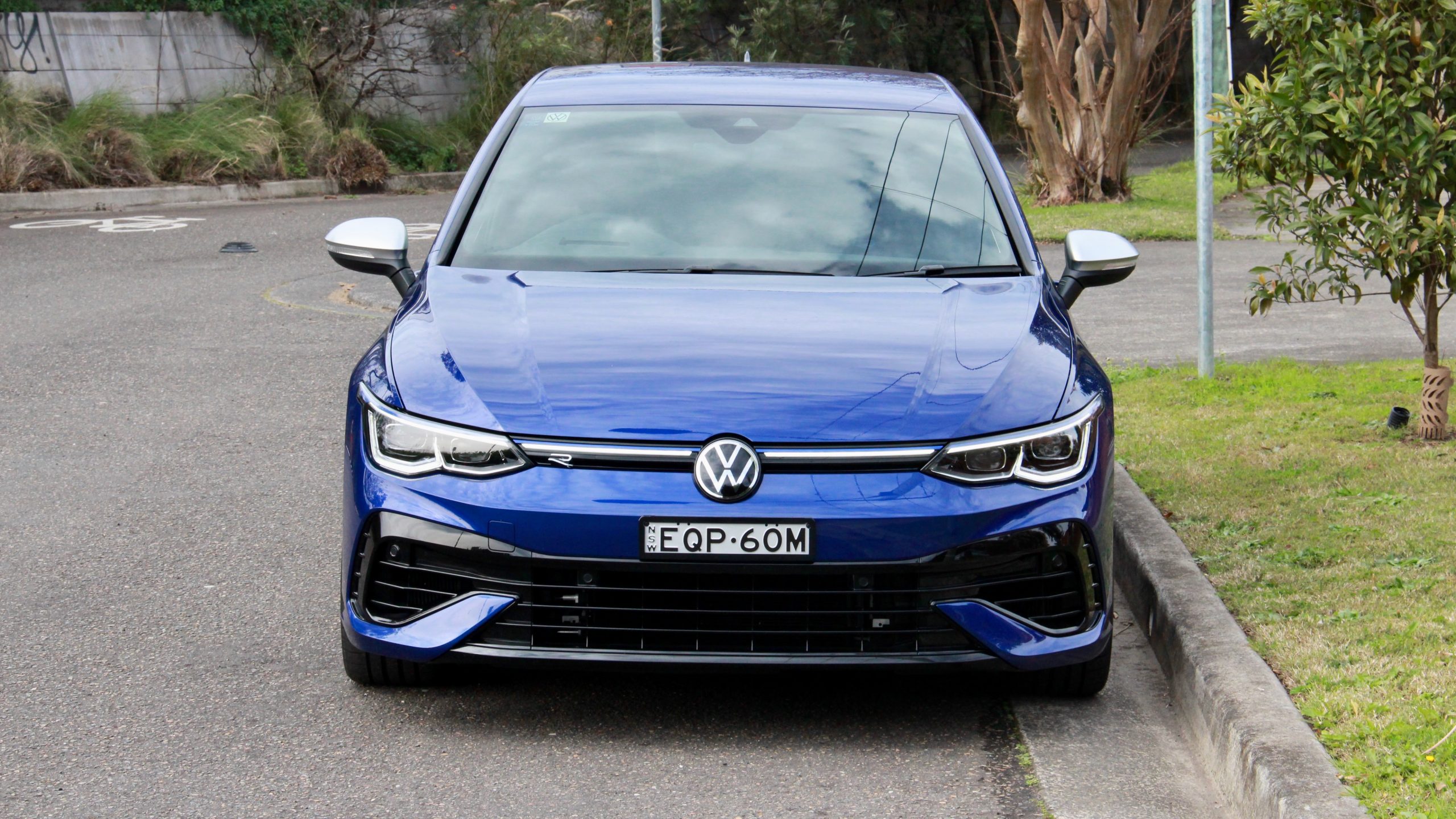
Thanks to the march of the performance SUV, hot hatches like the Golf R are increasingly irrelevant to new car buyers. Because of that, the remaining car makers in the hot hatch game are continually trying to push the boundaries with more power, more tech and more driving fun. Volkswagen says that its latest Golf R fits the hot hatch bill well. Does it – especially against the somewhat lacklustre GTI?
Price & Equipment: 8/10
Priced at $65,990 plus on-road road costs (around $73,000 drive away, depending on your location), the 2022 Volkswagen Golf R sits at the top of the local Golf range.
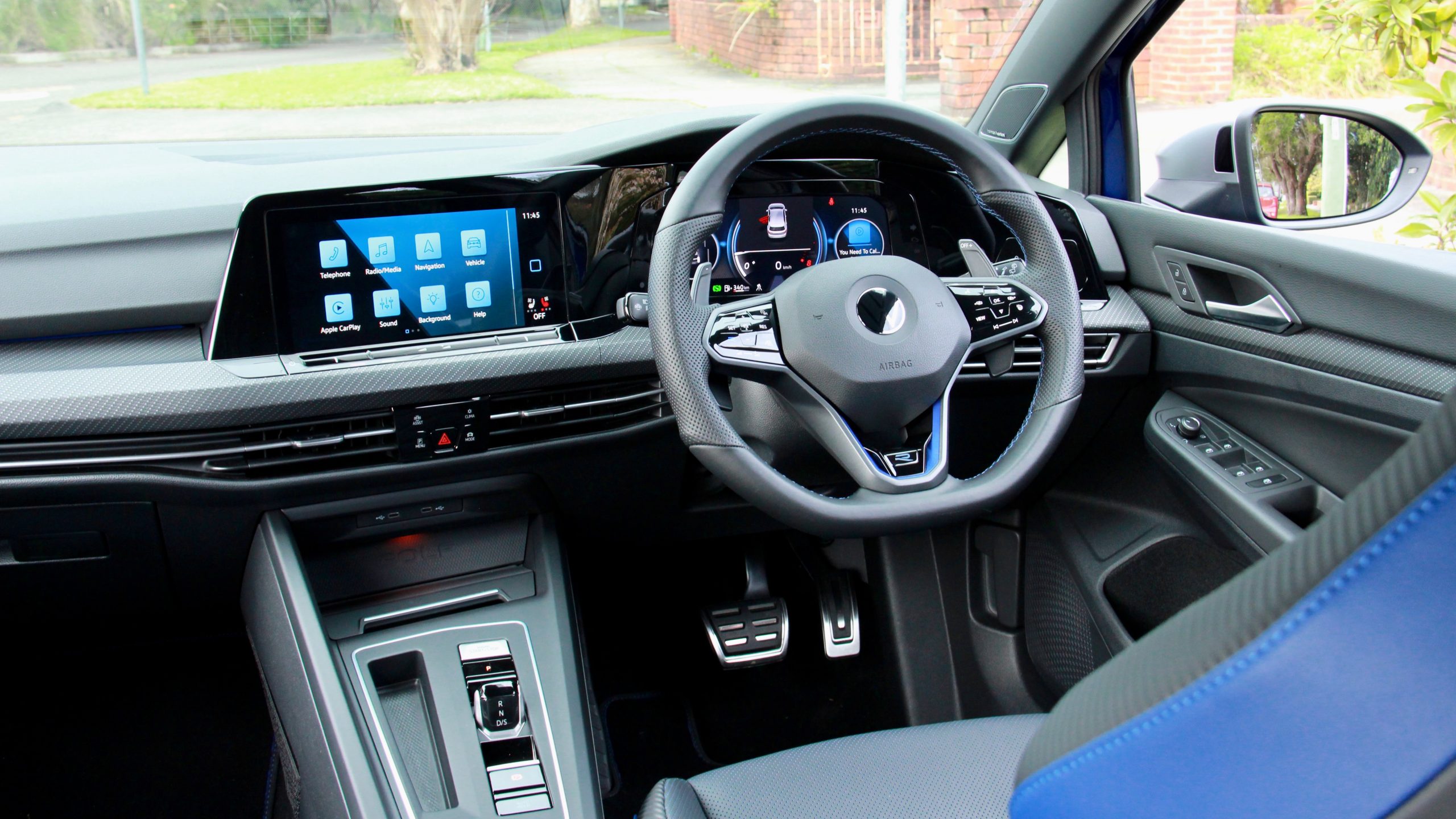
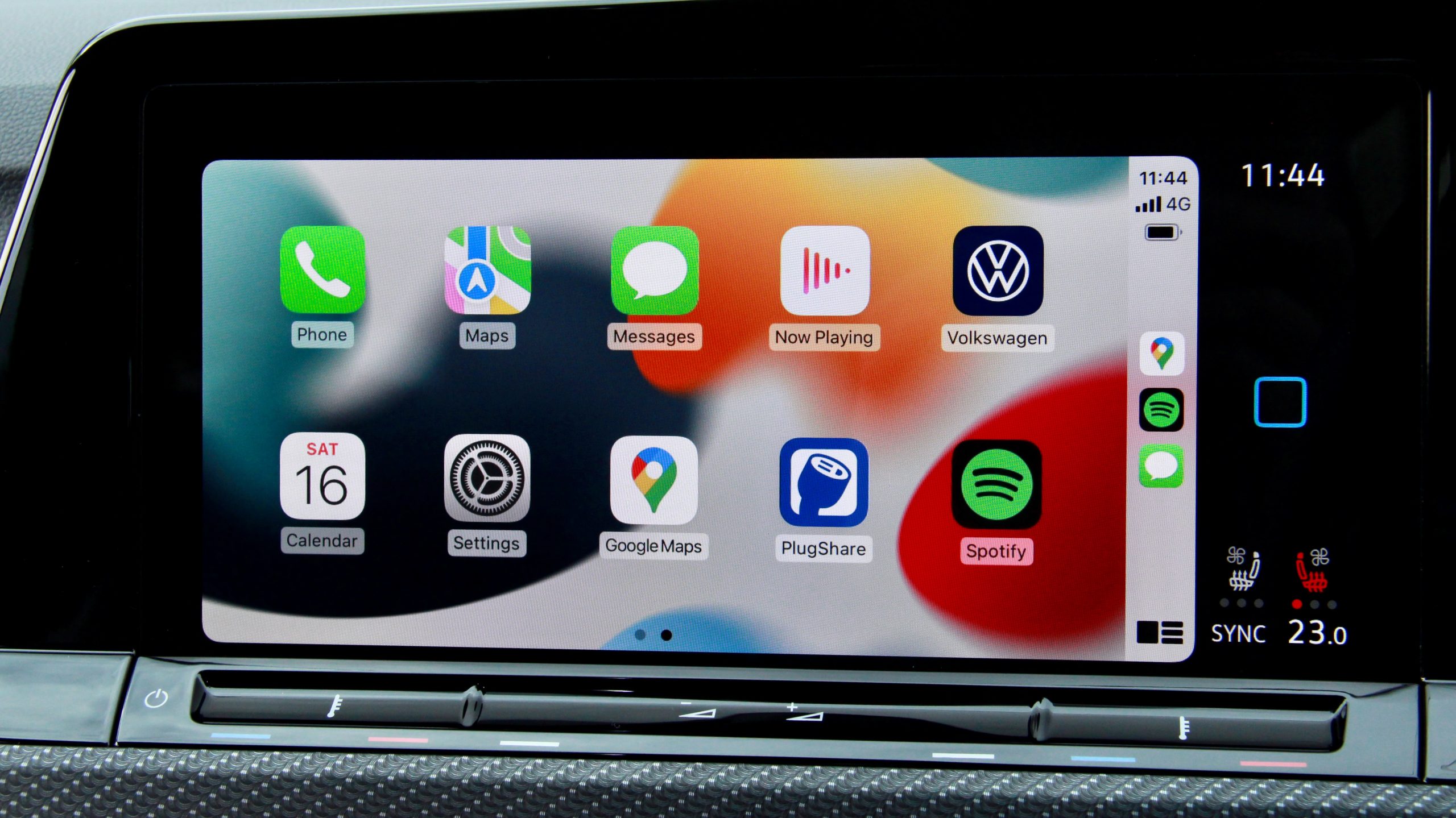
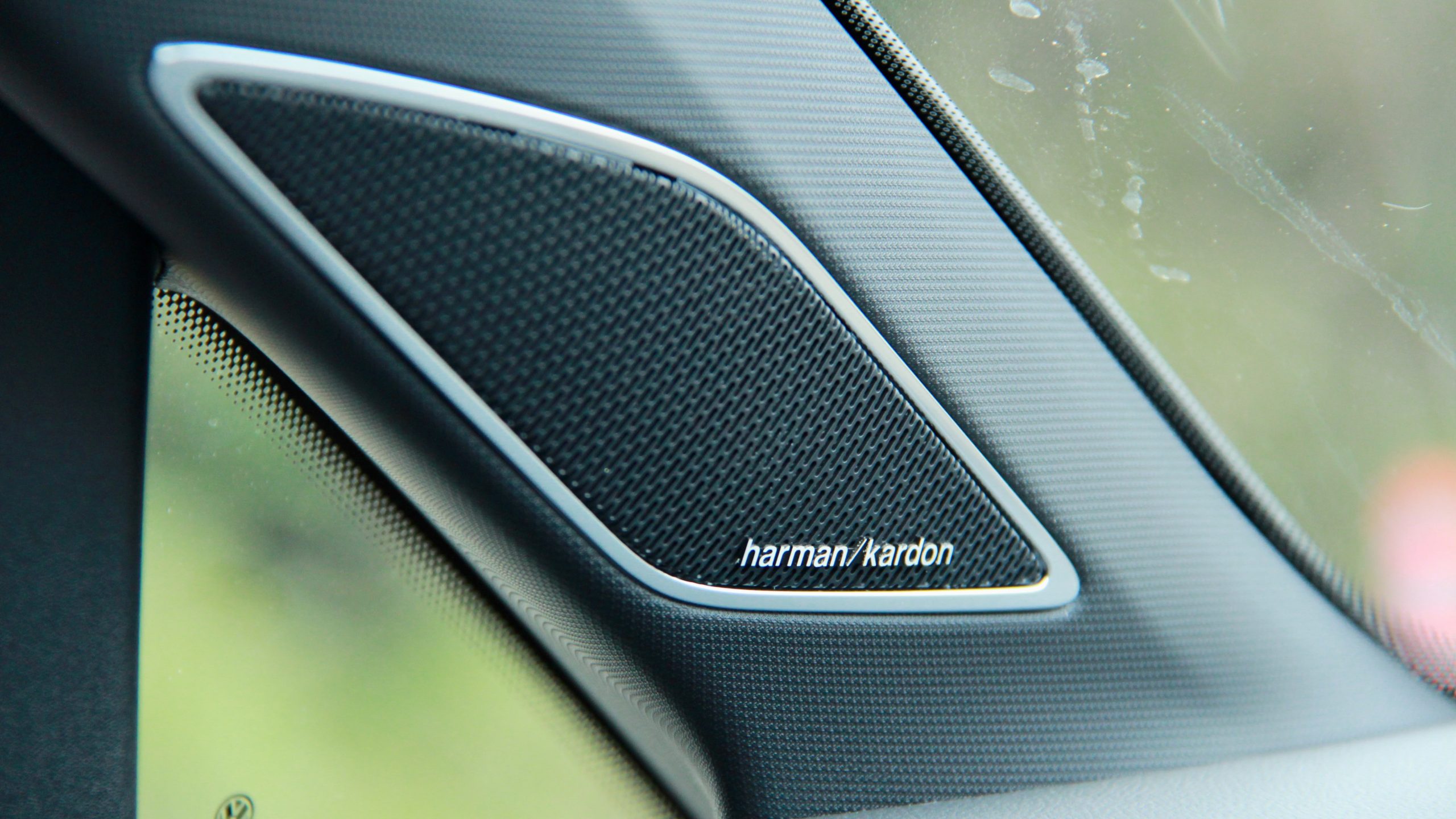
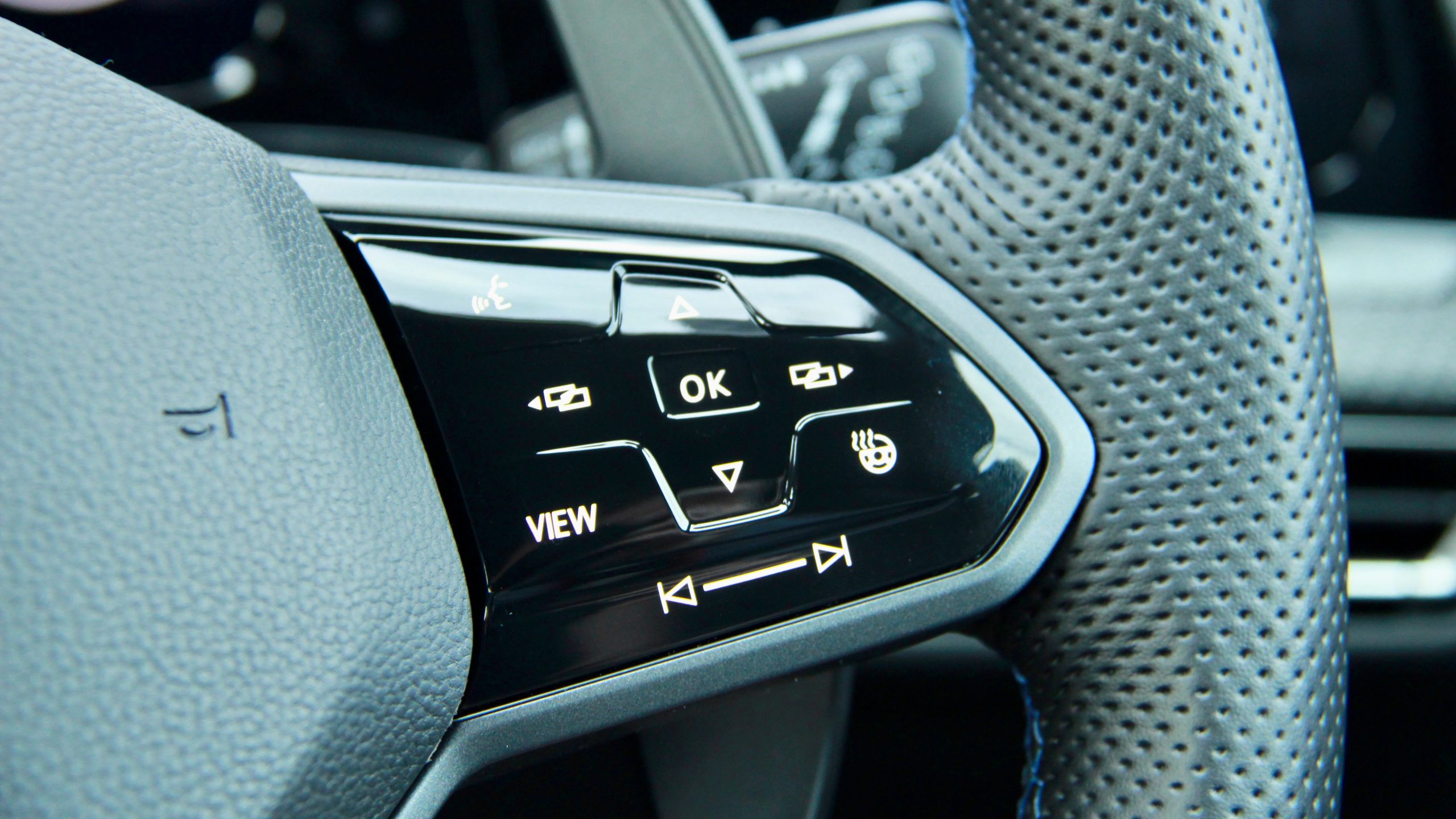
It’s well equipped with 19-inch alloy wheels, R-specific sports seats with 10-way electric adjustment and memory functionality for the driver, a rear spoiler, quad exhaust pipes, automatic all-LED lighting, auto wipers, Nappa leather upholstery with heated and ventilated front seats, a heated steering wheel, tri-zone climate control, a seven-speaker sound system, a 10-inch touchscreen with wireless Apple CarPlay and Android auto, satellite navigation, digital radio, a wireless phone charger, a 12.3-inch digital driver’s display, keyless entry and start, heated and auto-folding mirrors, rear privacy glass, selectable driving modes, LED interior ambient lighting with 30 colour choices and four USB-C charging ports.
Safety kit includes eight airbags, auto emergency braking (AEB) with pedestrian, cyclist and intersection assist, rear auto braking, Matrix auto high beam, blind-spot monitoring with rear cross-traffic alert, lane keep assist with lane departure warning, lane trace assist, adaptive cruise control with stop and go functionality, automatic post-collision braking, driver attention monitoring, exit warning assist, a heads-up display, front and rear parking sensors, semi-automatic parking, a reversing camera and an alarm.
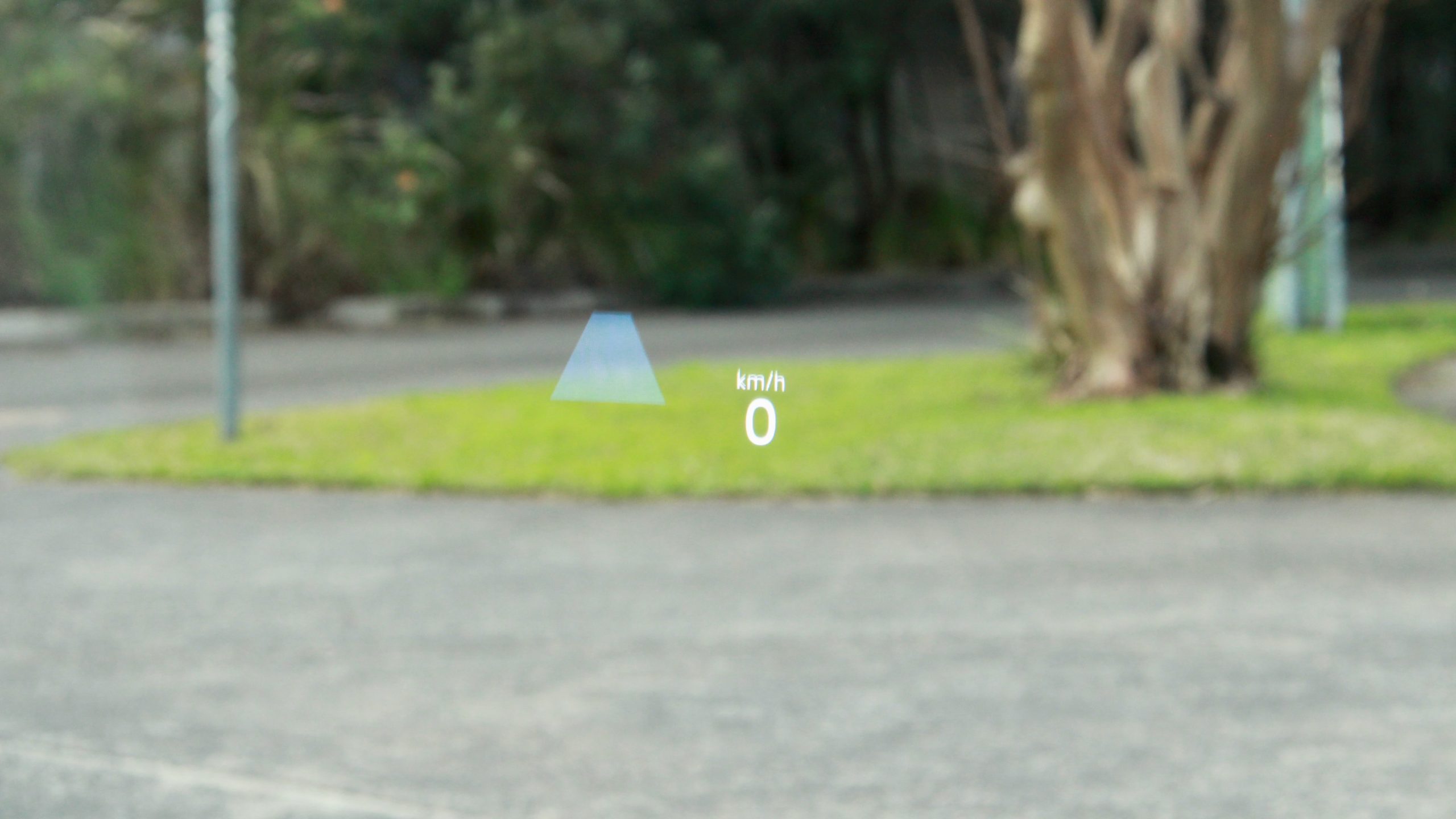
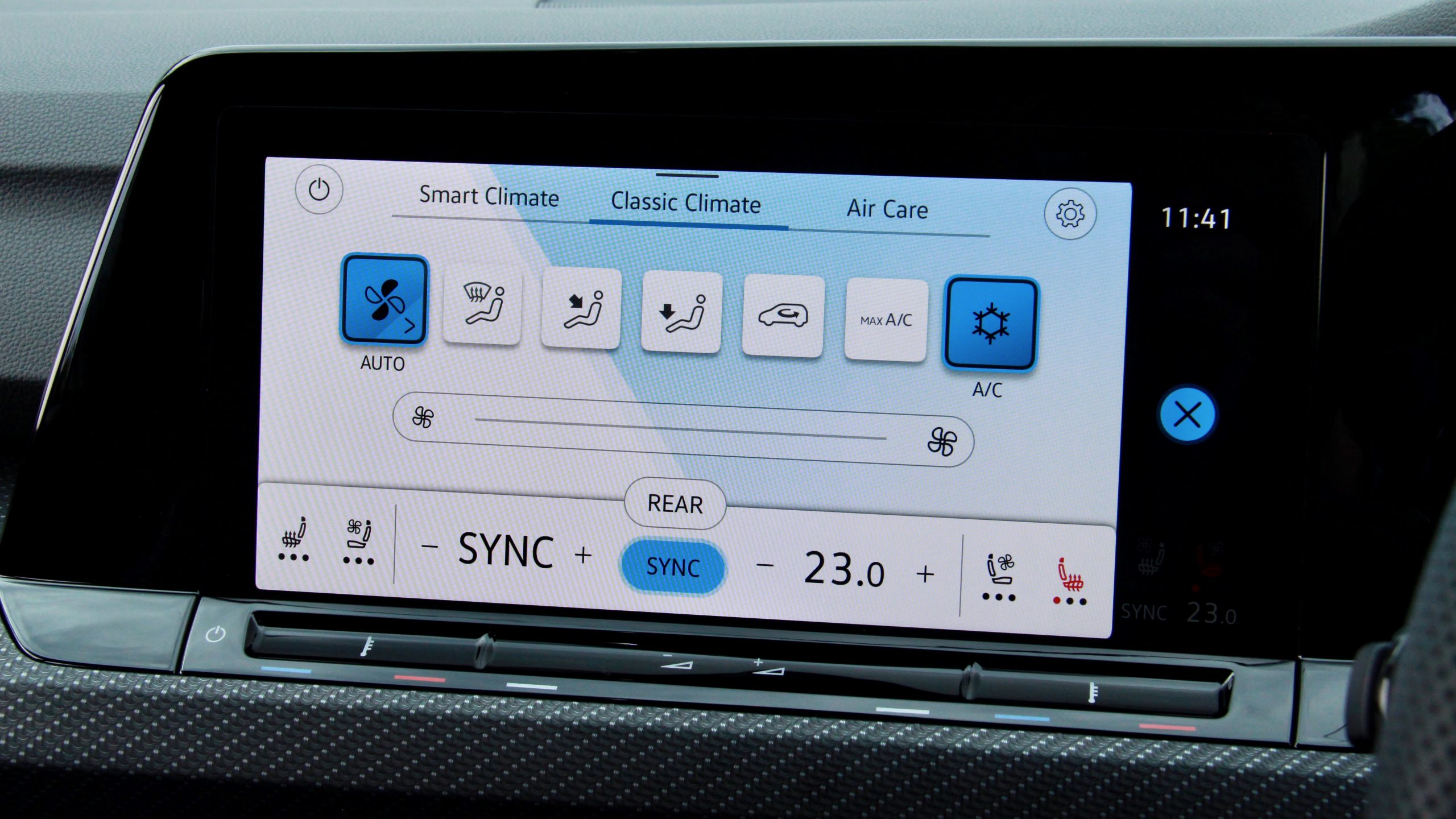
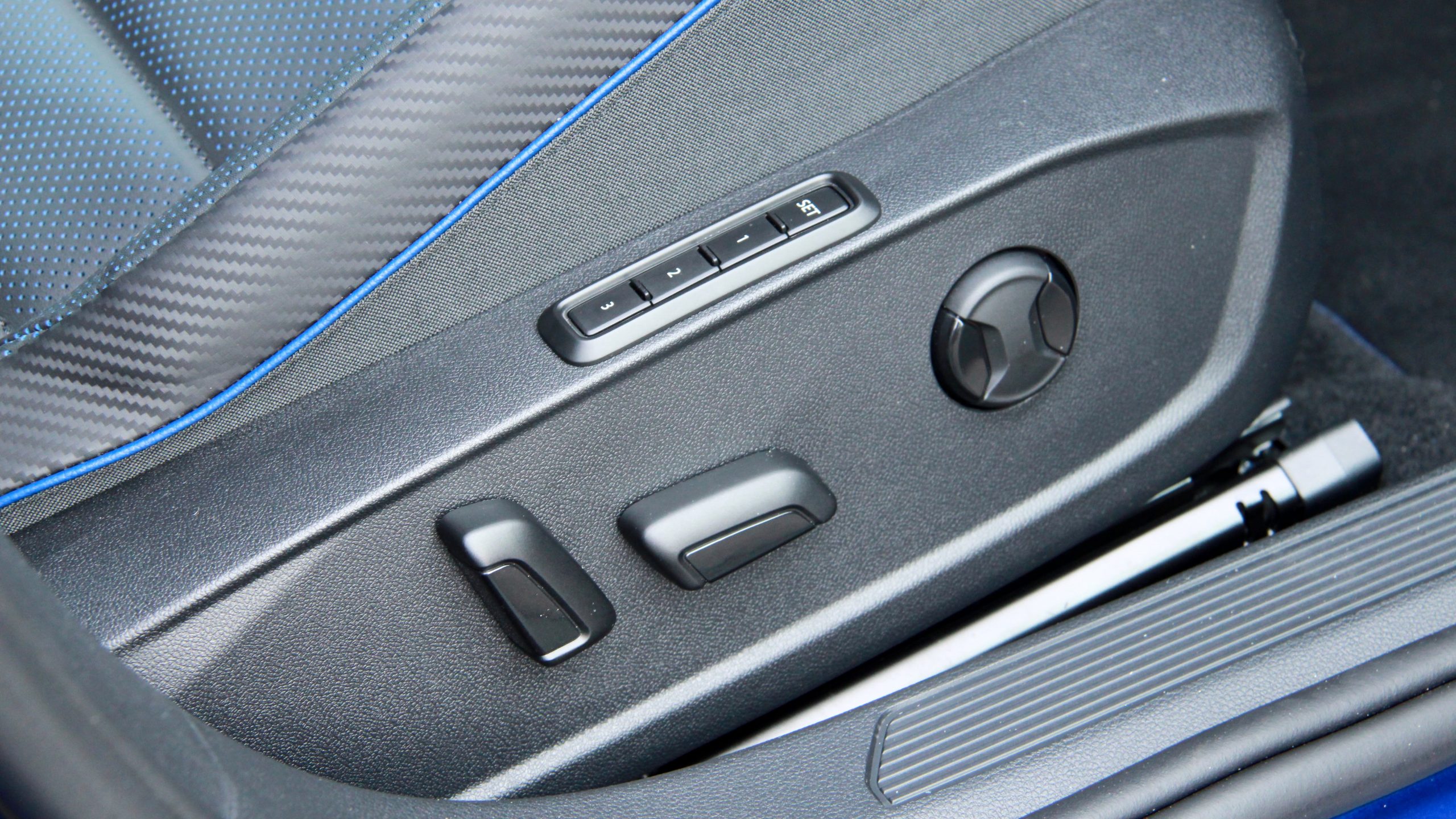
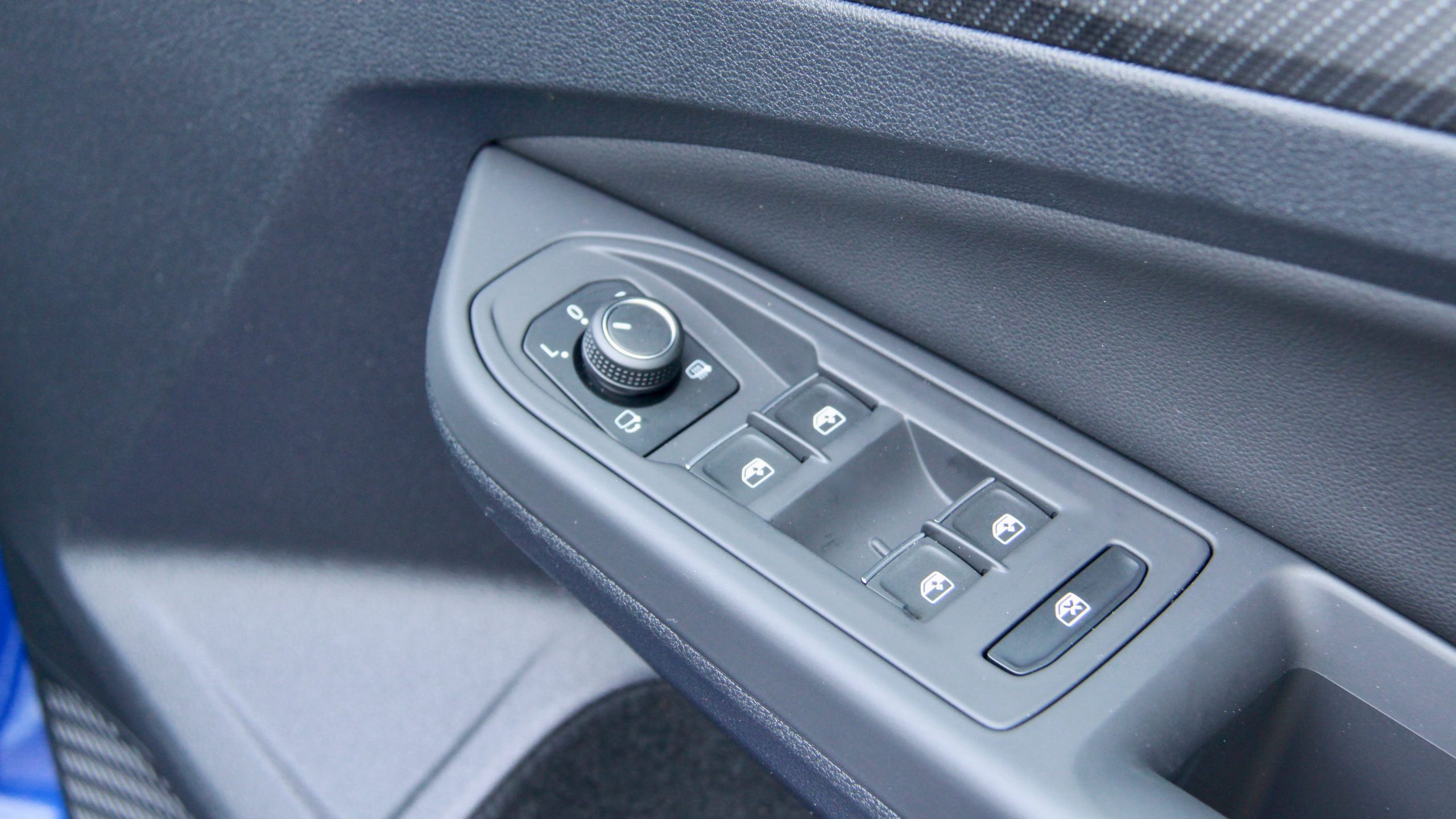
There are only two options for the Golf R: a 480W Harmon Kardon sound system is $1,000 and a sunroof is $1,900. All paint options are no-cost, and include ‘Deep Black’, ‘Pure White’ and our test car’s ‘Lapiz Blue’. The only interior option is black Nappa leather with blue trim highlights. Fully loaded, you’re looking at around $75,000 drive away for the Golf R or about $10,000 more than the previous generation Golf R.
So why score it 8/10 for value for money? Well, all cars continue to climb higher in pricing and the R is only around $6,000 more than a fully optioned Golf GTI. Choosing a similarly equipped Audi S3 or BMW M135i (again with less power) will cost you around $10,000 more, and a Mercedes-AMG A35 costs around $15,000 more.
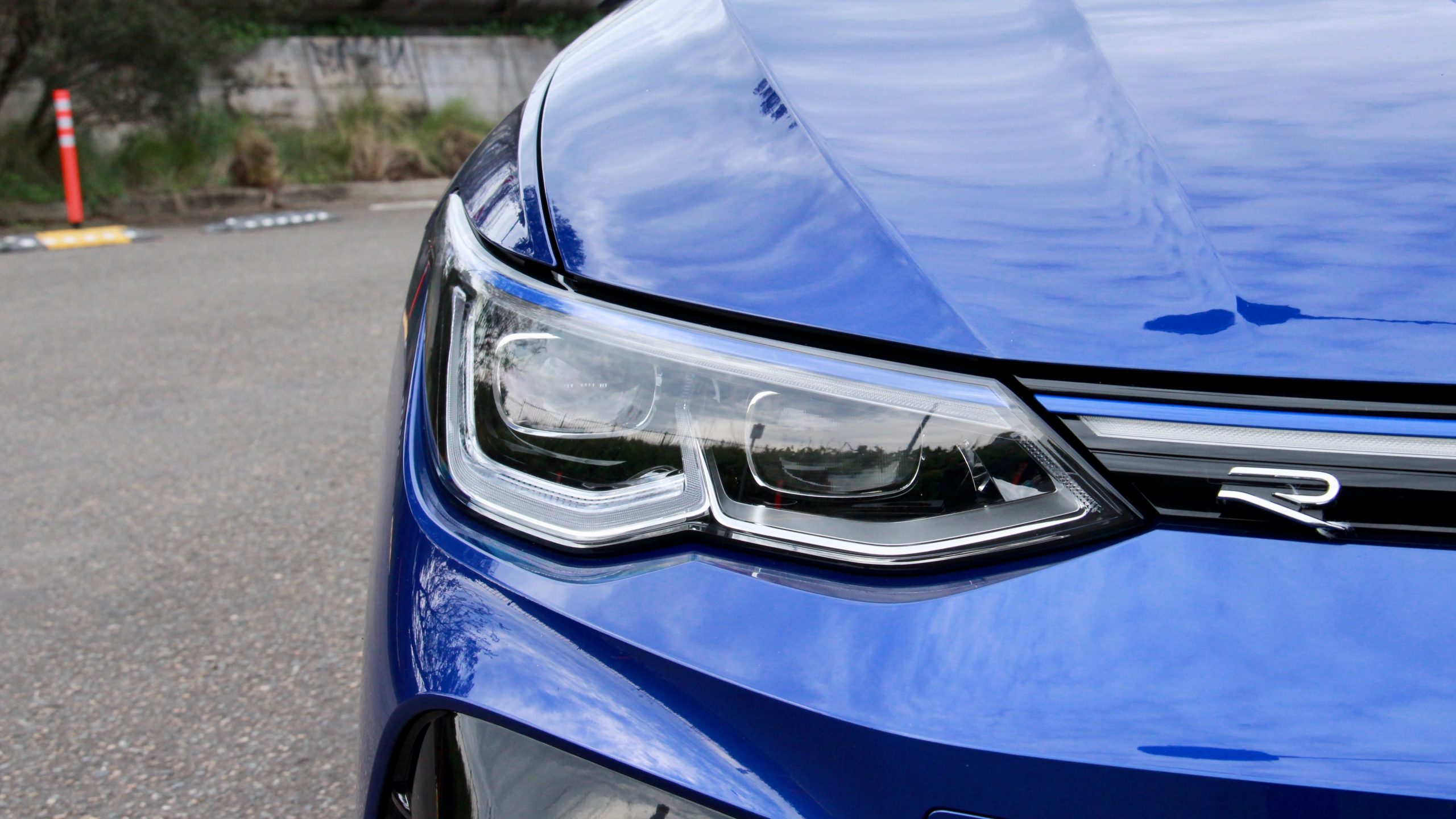
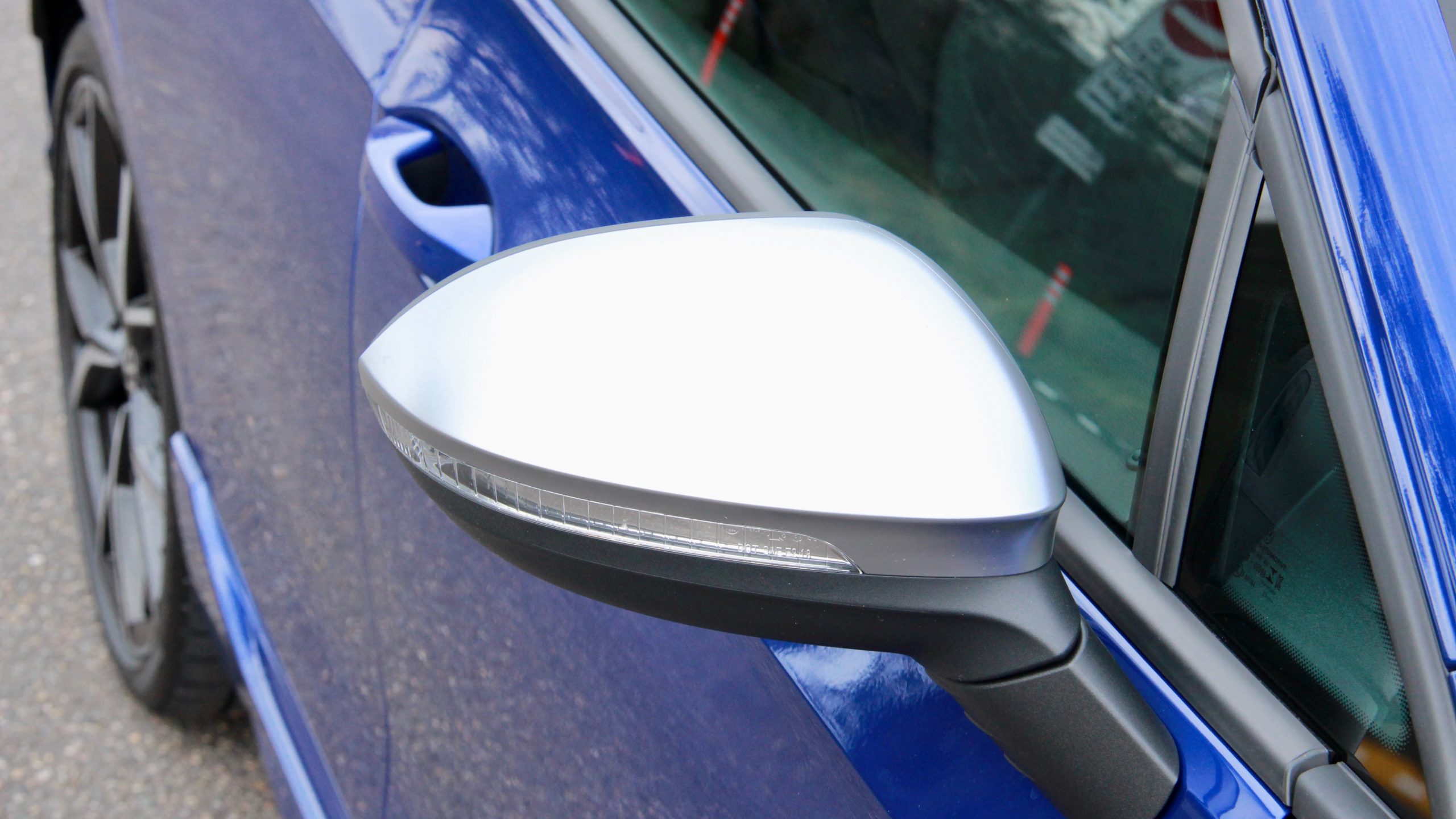

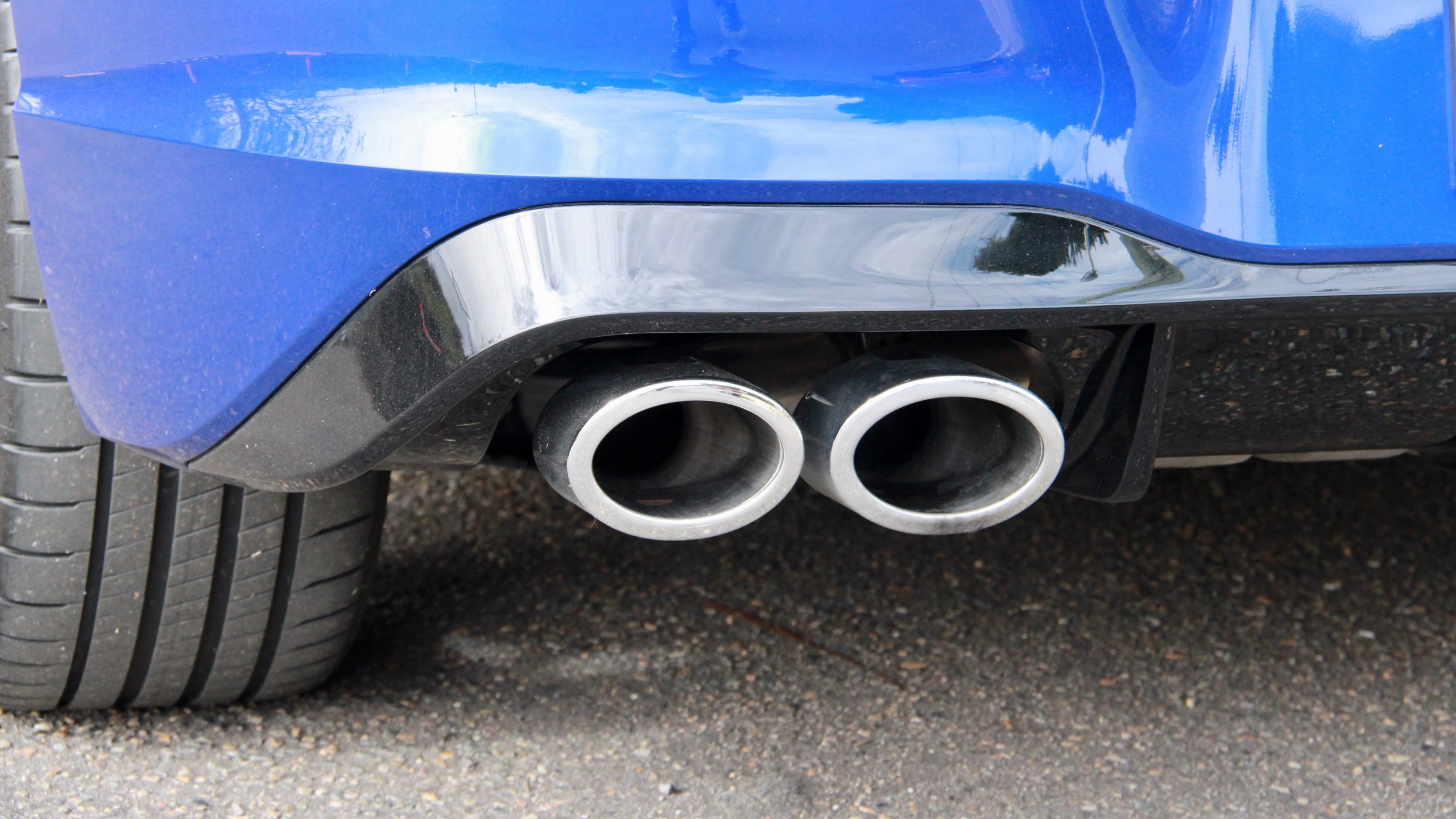
Even a fully loaded Renault Megane R.S. Trophy will cost around the same as the Golf R, and the Golf features all-wheel drive, more performance and more equipment. So with that in mind, we think the new Golf R – while not exactly a bargain – represents good value for money against its current competitor set.
Performance & Economy: 9.5/10
Under the bonnet of the 2022 Volkswagen Golf R is the ubiquitous ‘EA888’ 2.0-litre turbocharged four-cylinder petrol engine, which pumps out 235kW of power (between 5,600rpm-6,500rpm) and 400Nm of torque (between 2,000rpm and 5,600rpm) in this tune. It’s matched solely to a seven-speed ‘DSG’ dual-clutch automatic transmission and the brand’s ‘4Motion’ all-wheel drive system. Volkswagen claims a 0-100km/h sprint time of just 4.8 seconds using launch control, but in reality, it feels even faster.
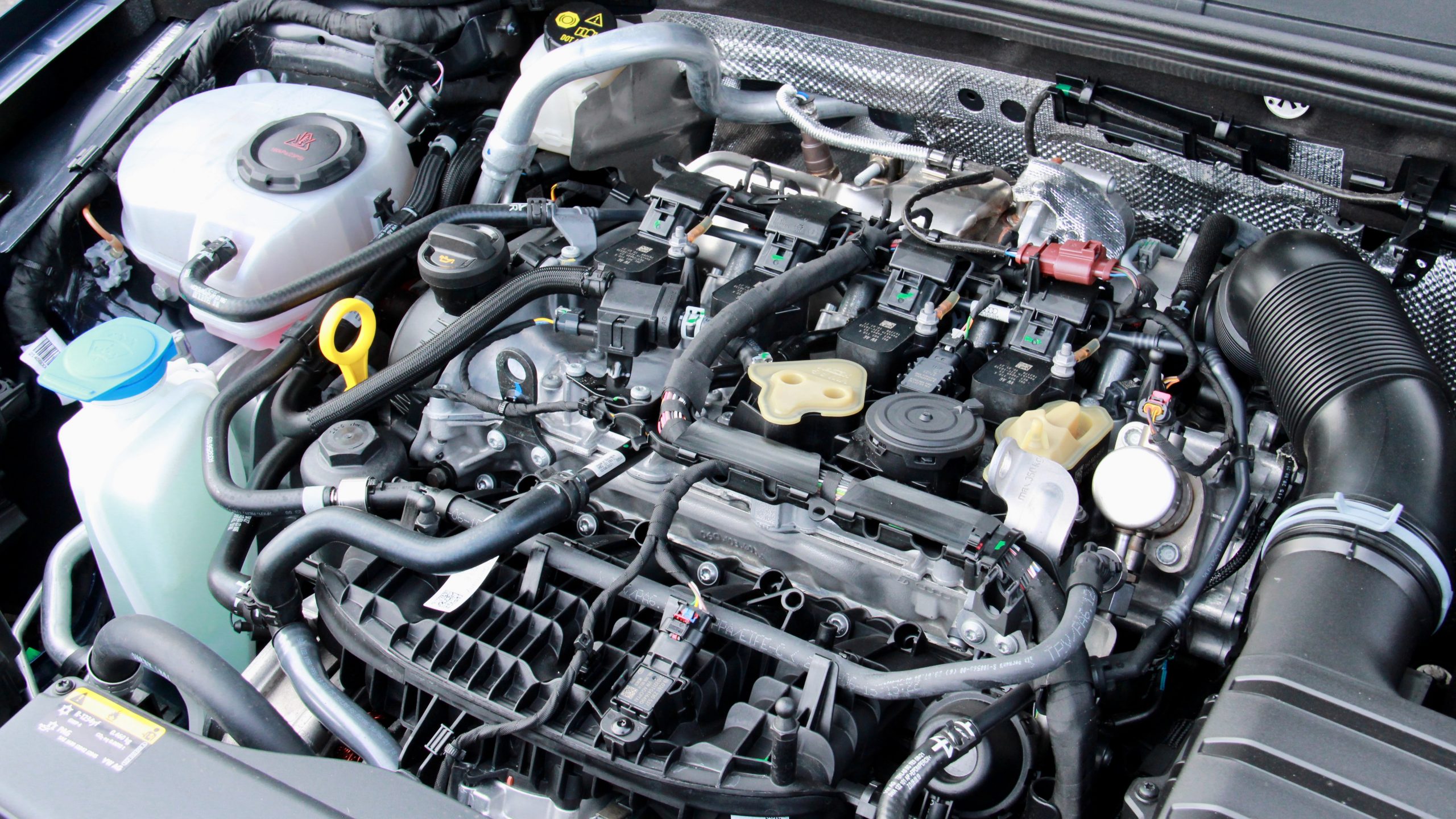
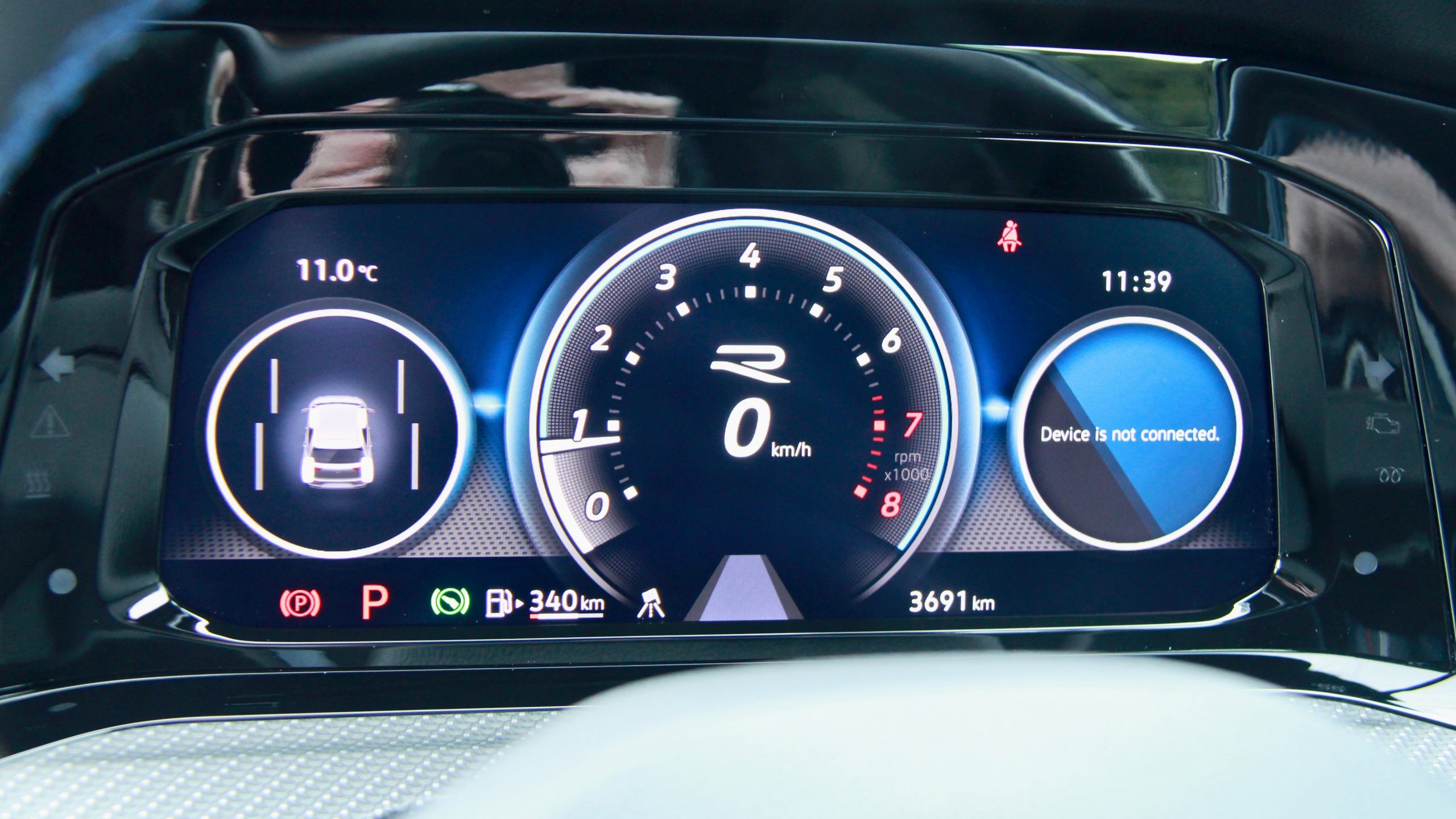
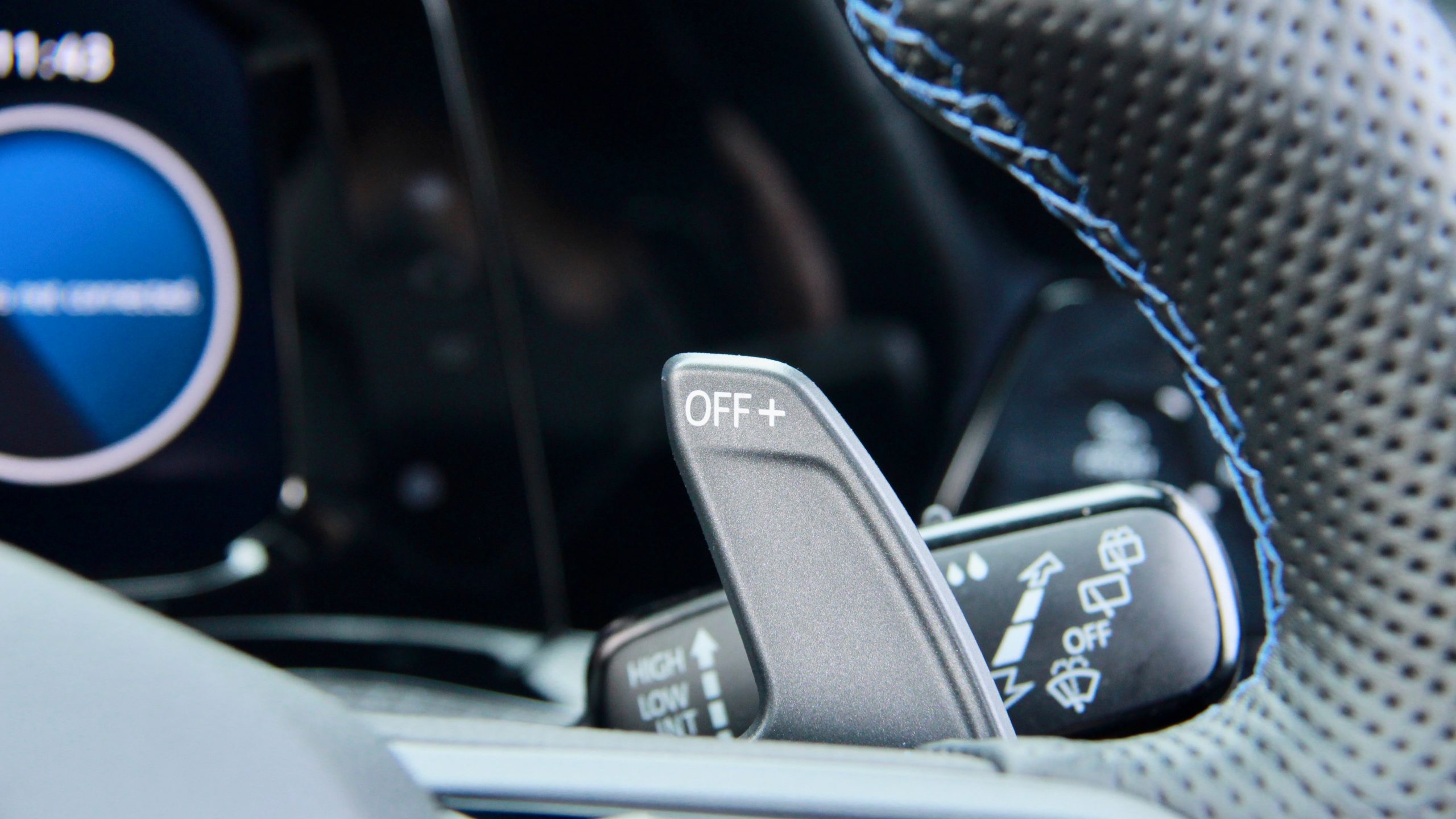
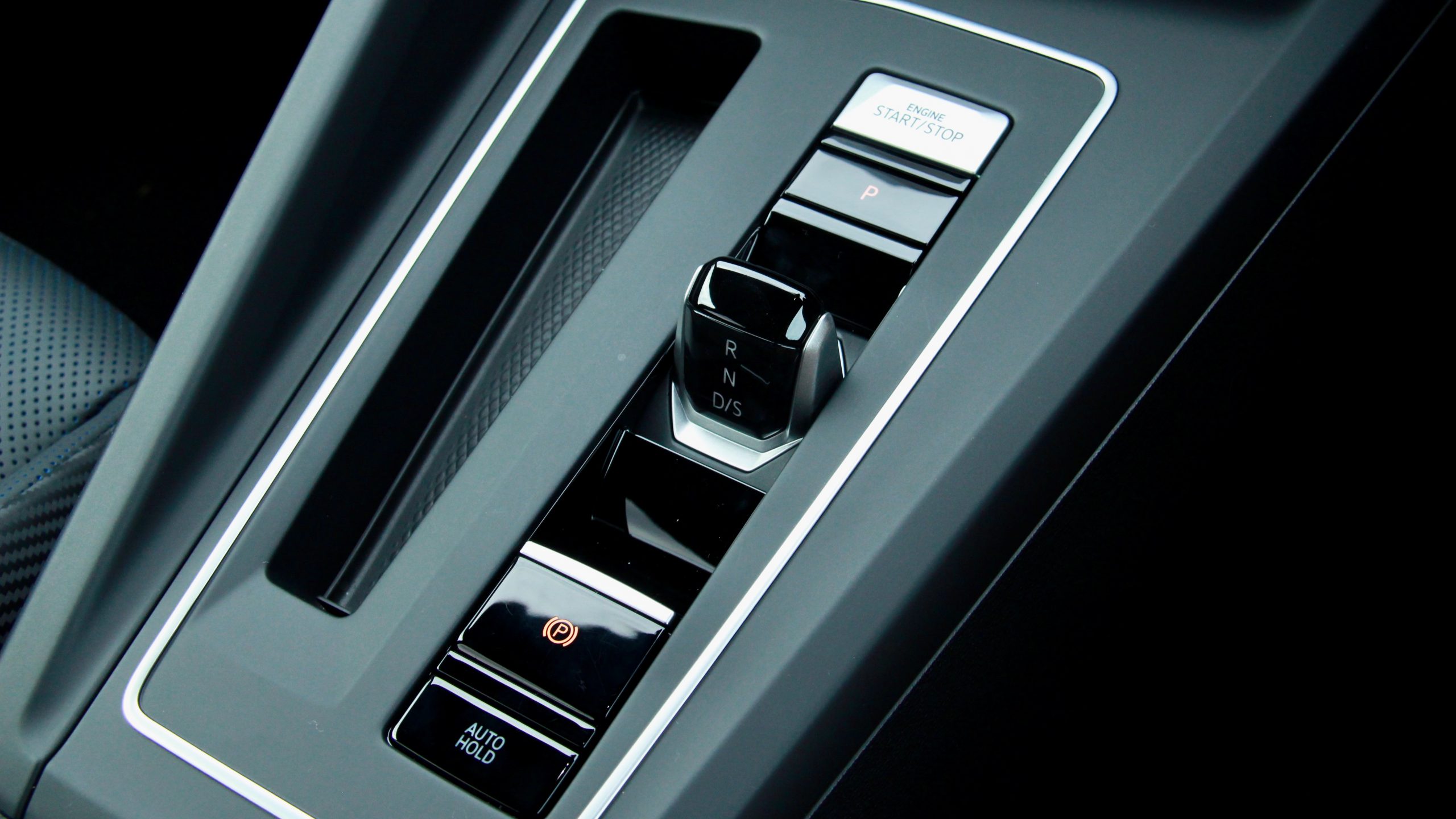
It’s a familiar engine, but the Golf R’s donk is really one of the best four-cylinder units on the market today. Its spread of torque is very wide (all the way from 2,000rpm to 5,600rpm when peak power hits), it sounds great and yet, when you’re just pottering around town normally, it’s quiet and effortless. Helping this Jekyll and Hyde personality is a wide variety of drive modes, from comfort to sport to race and even special drift and Nurburgring modes – finding a Golf R character to suit you is easy.
The only transmission on offer in the Mk8 generation of the Golf R in Australia is a seven-speed dual-clutch auto with paddle shifters for part-manual control. Sometimes the usual low-speed hesitancy is noticable, but it’s an otherwise fantastic gearbox with lightning quick shifts and more intuitiveness than we’re used to from DSGs. In the sportier drive modes, the DSG helps the Golf R feel properly fast, and much faster than any Golf before it. Having said that, we still wish it had the six-speed manual on offer in North America.
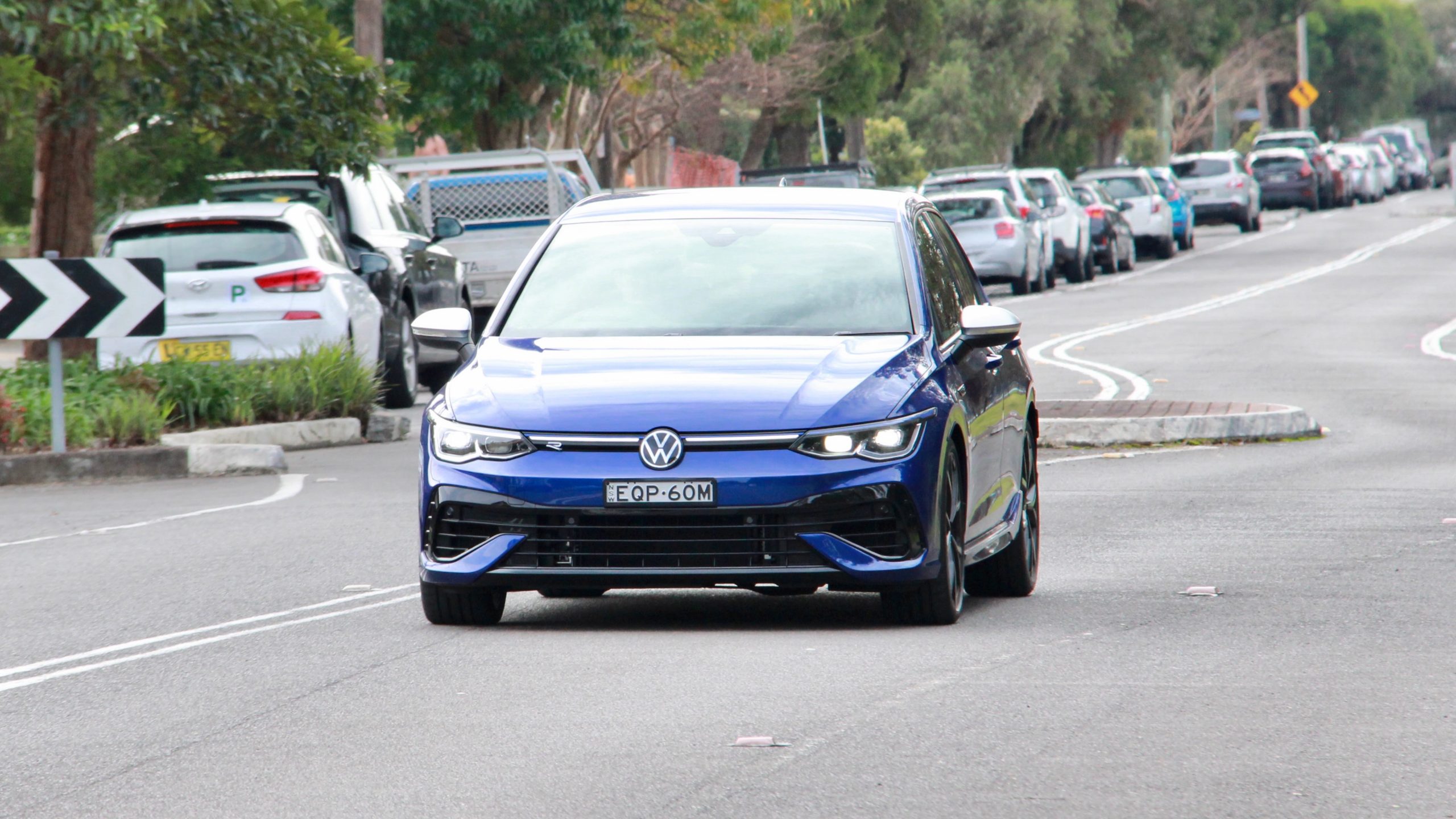

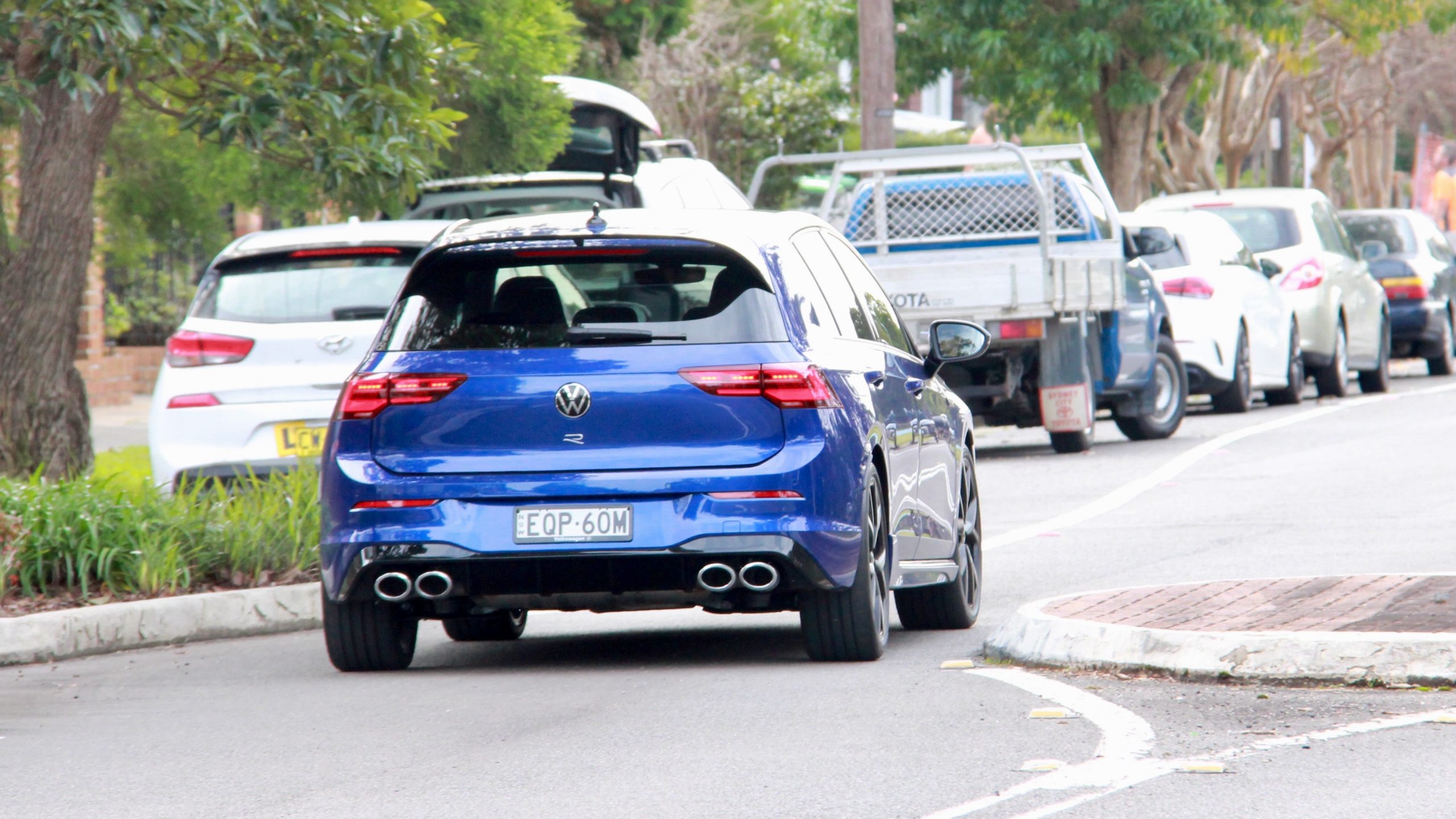
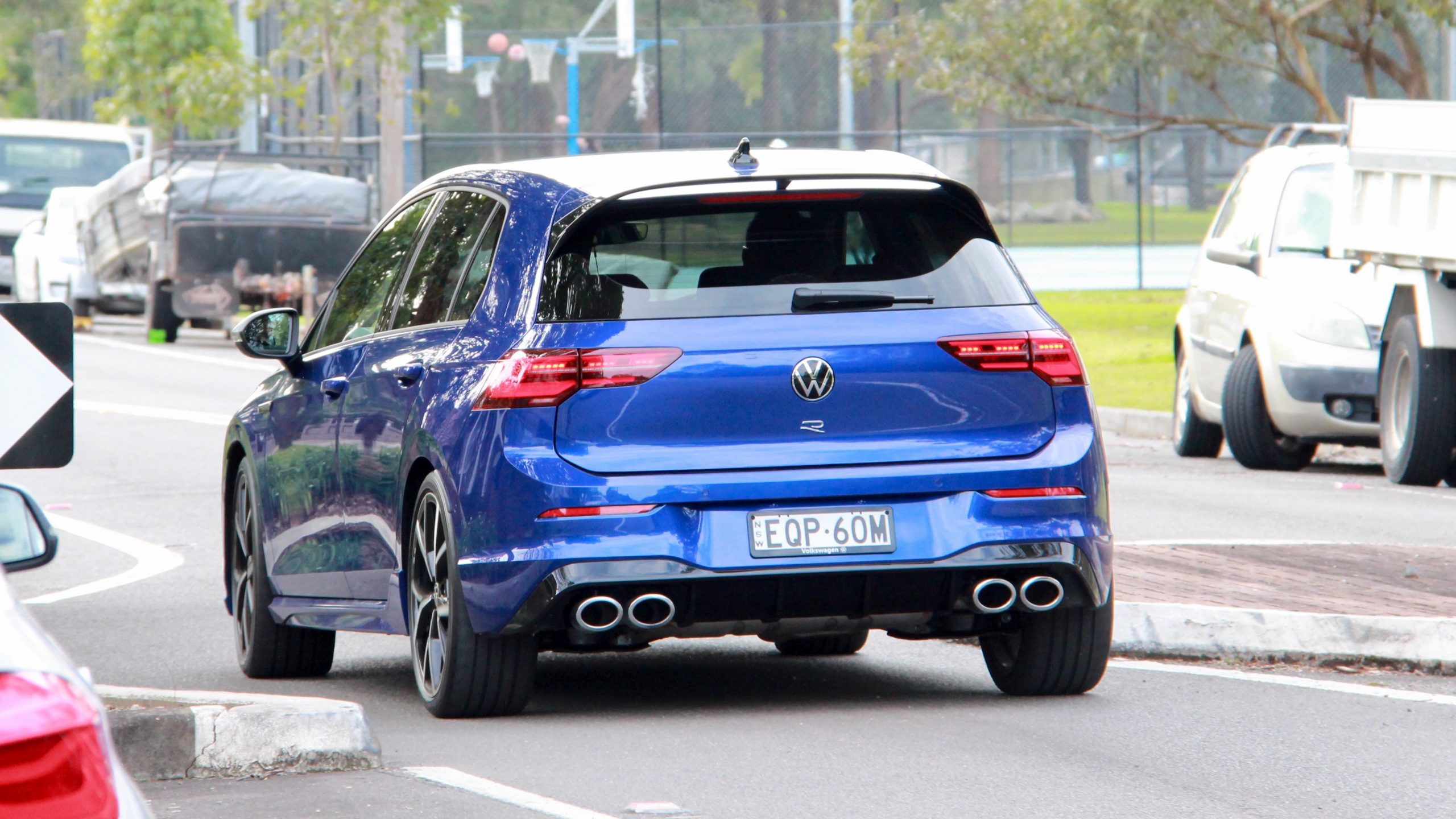
Volkswagen claims that the Golf R hatch will use 7.8L/100km on a combined cycle, and we got 11.4L/100km in purely urban use (where our driving wasn’t particularly economical). It has a 55-litre fuel tank and uses 98RON premium unleaded. Interestingly, because the Golf R wagon has a petrol particulate filter, its official fuel use is 0.4L/100km less at 7.4L/100km. That’s despite it having 20Nm more torque and weighing 82kg more than the hatch.
Ride & Handling: 9/10
Using the same ‘MQB’ platform as regular Golf models – and indeed a wide variety from Seat, Skoda, Audi and Cupra sister brands – the 2022 Volkswagen Golf R offers up solid driving dynamics, a very solid driving feeling and a greater degree of driving fun and involvement than previous Golf Rs. At its core, the Golf R is still a Golf: it’s quiet, comfortable and it rides very well – but it’s also much more fun than before.
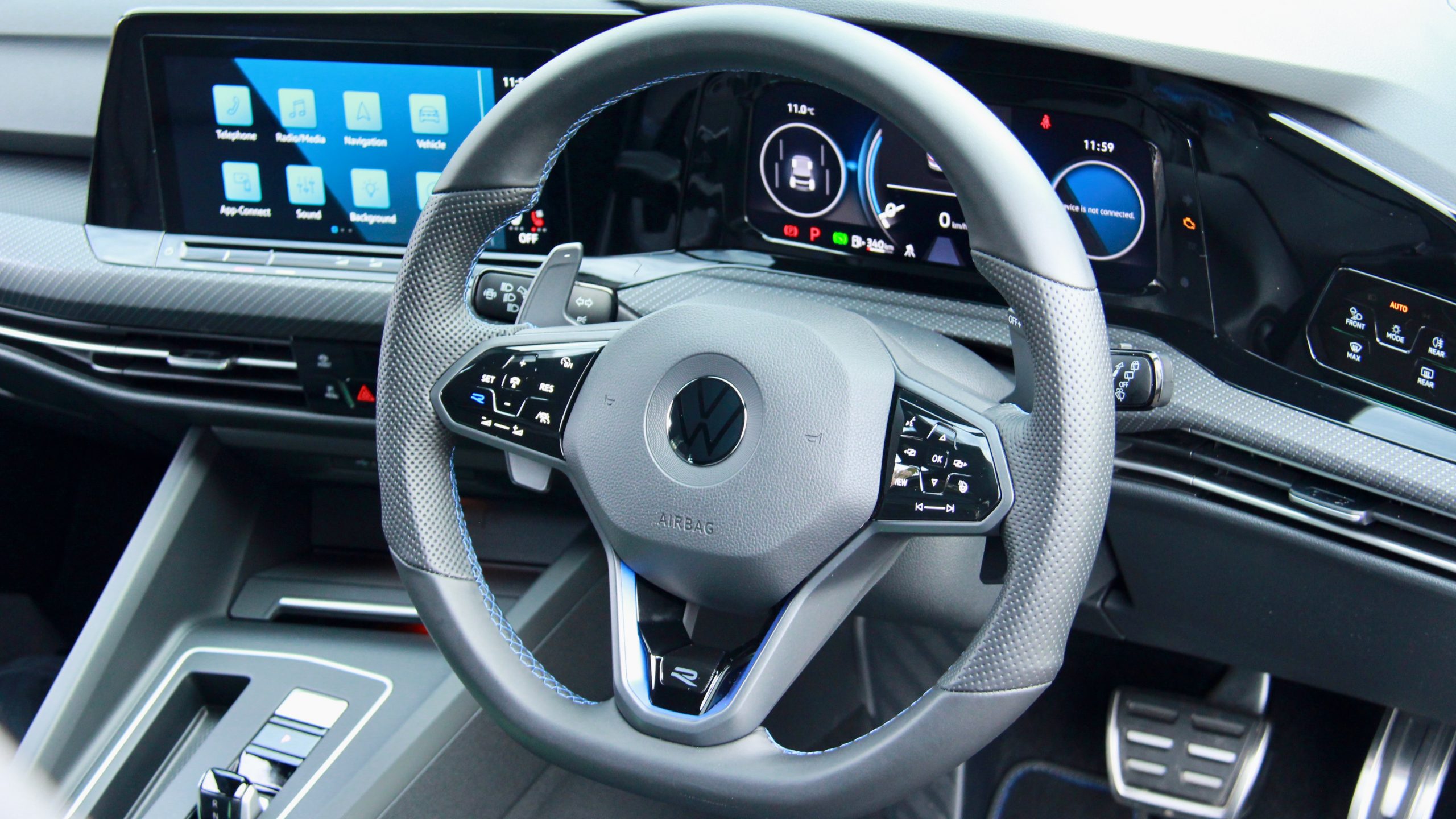
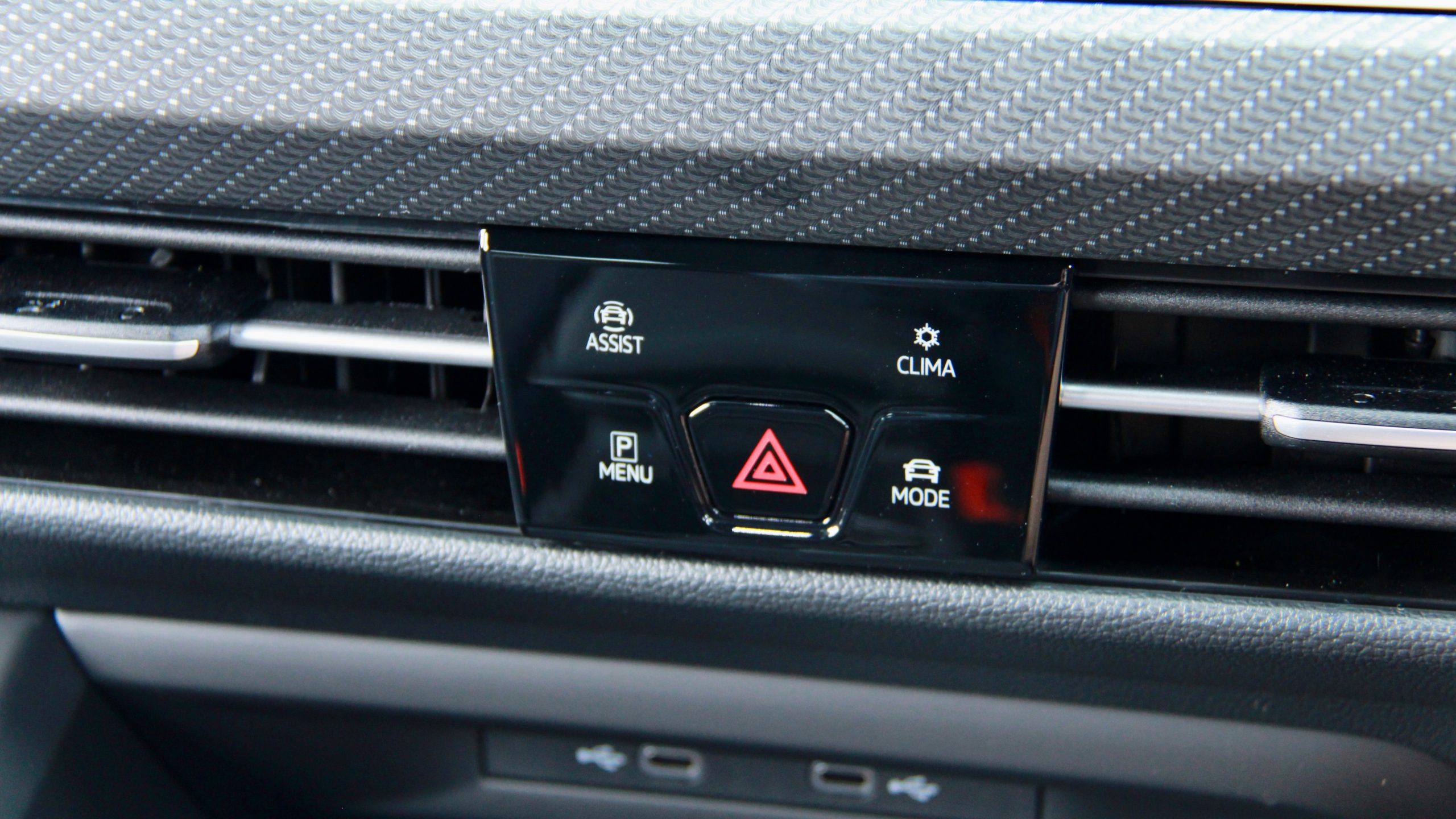
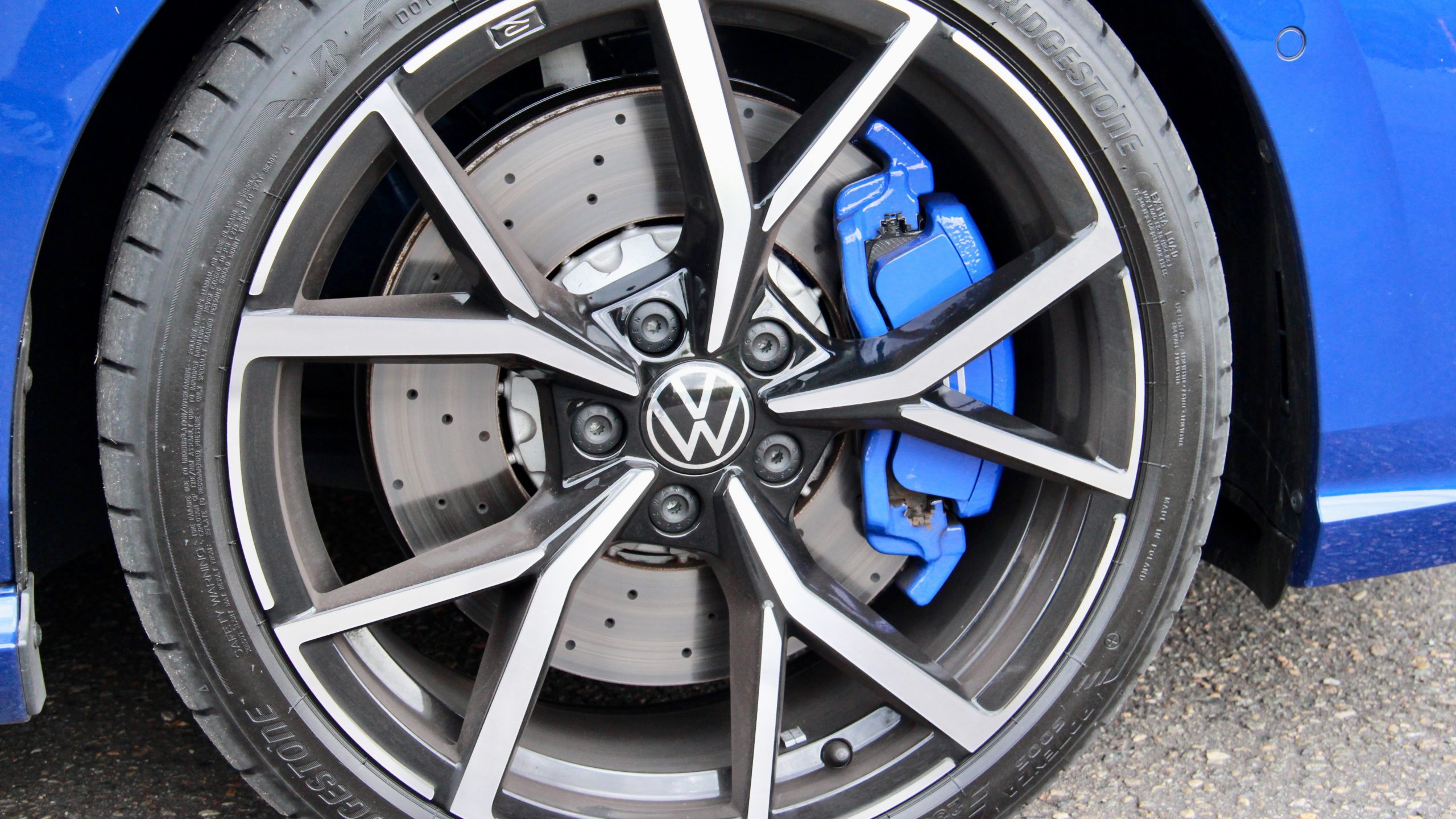
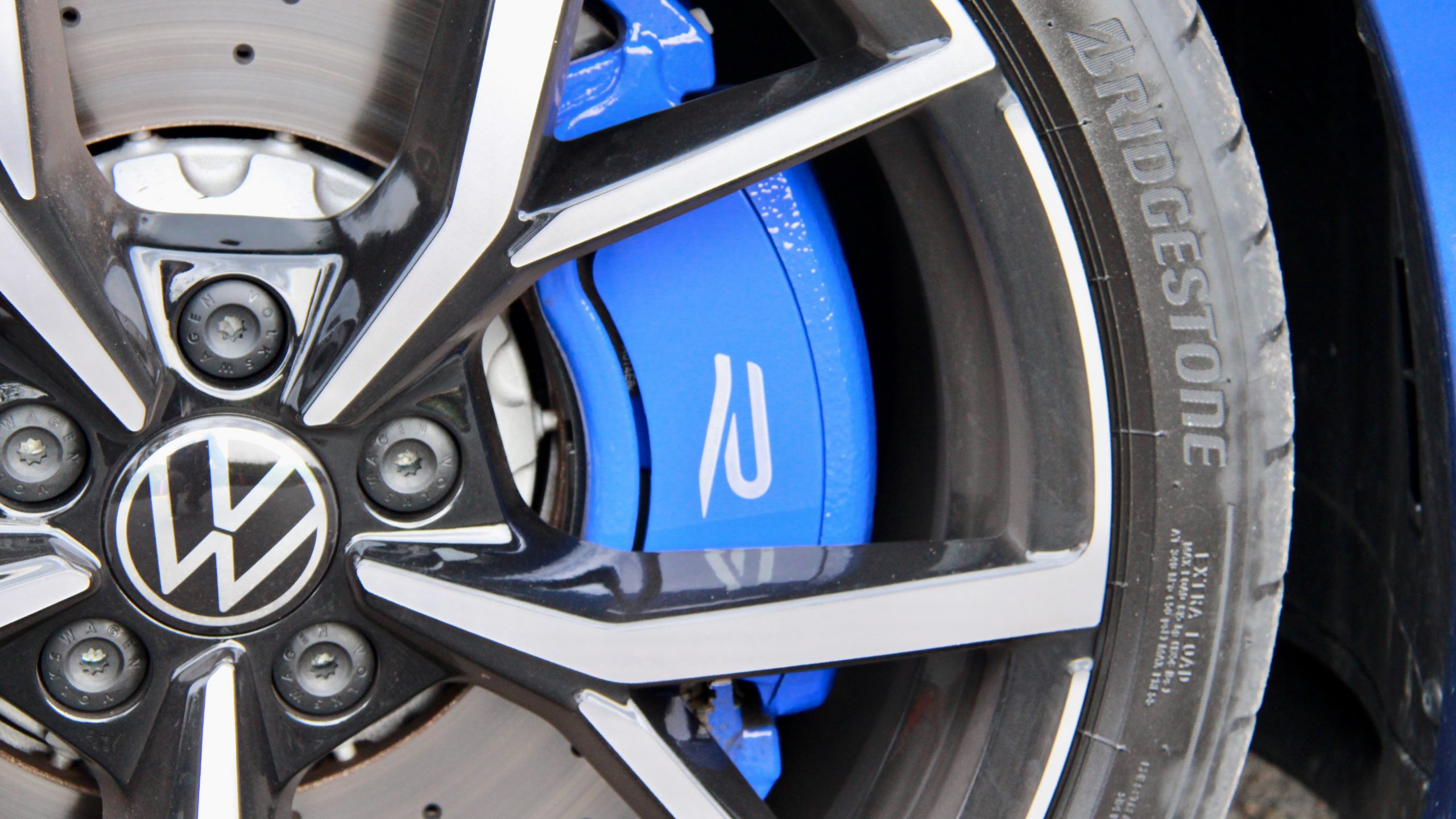
Part of that is the standard fit adaptive dampers on the Australian-spec Golf R – in comfort mode, the ride quality is breathtakingly supple and aside from the extra shove, there’s barely a clue to the R’s extra sporting intent. Switch to other drive modes – sport through to race – and it can be quite firm, but it’s never harsh. We particularly liked the special Nurburgring mode, which actually softens the ride a touch for greater comfort while pushing on. The Golf R’s cross-country ability is fantastic.
Further driving nirvana is found when taking the Golf R on a great driving road. Punchy mid-corner propulsion is delivered thanks to the ‘R-Performance Torque Vectoring’ system, which has electromechanical clutch packs next to the rear differential and can send up to 50 per cent of the available torque to either rear wheel. However, there’s still the typical Golf tendency towards understeer. But there’s also a somewhat effective drift mode, which gives more electronic help if you feel the need to dabble in oversteer, though definitely not on public roads.
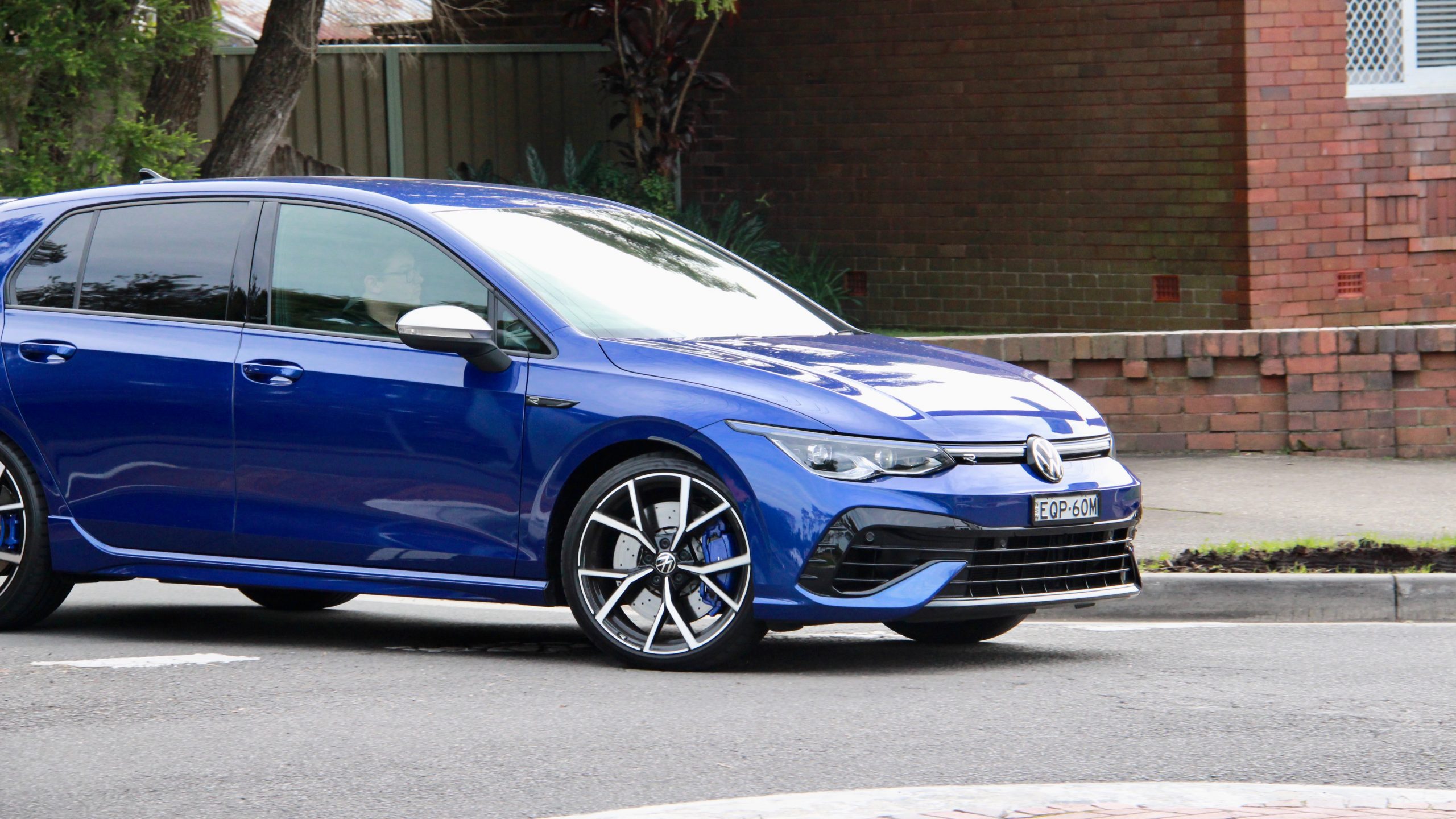
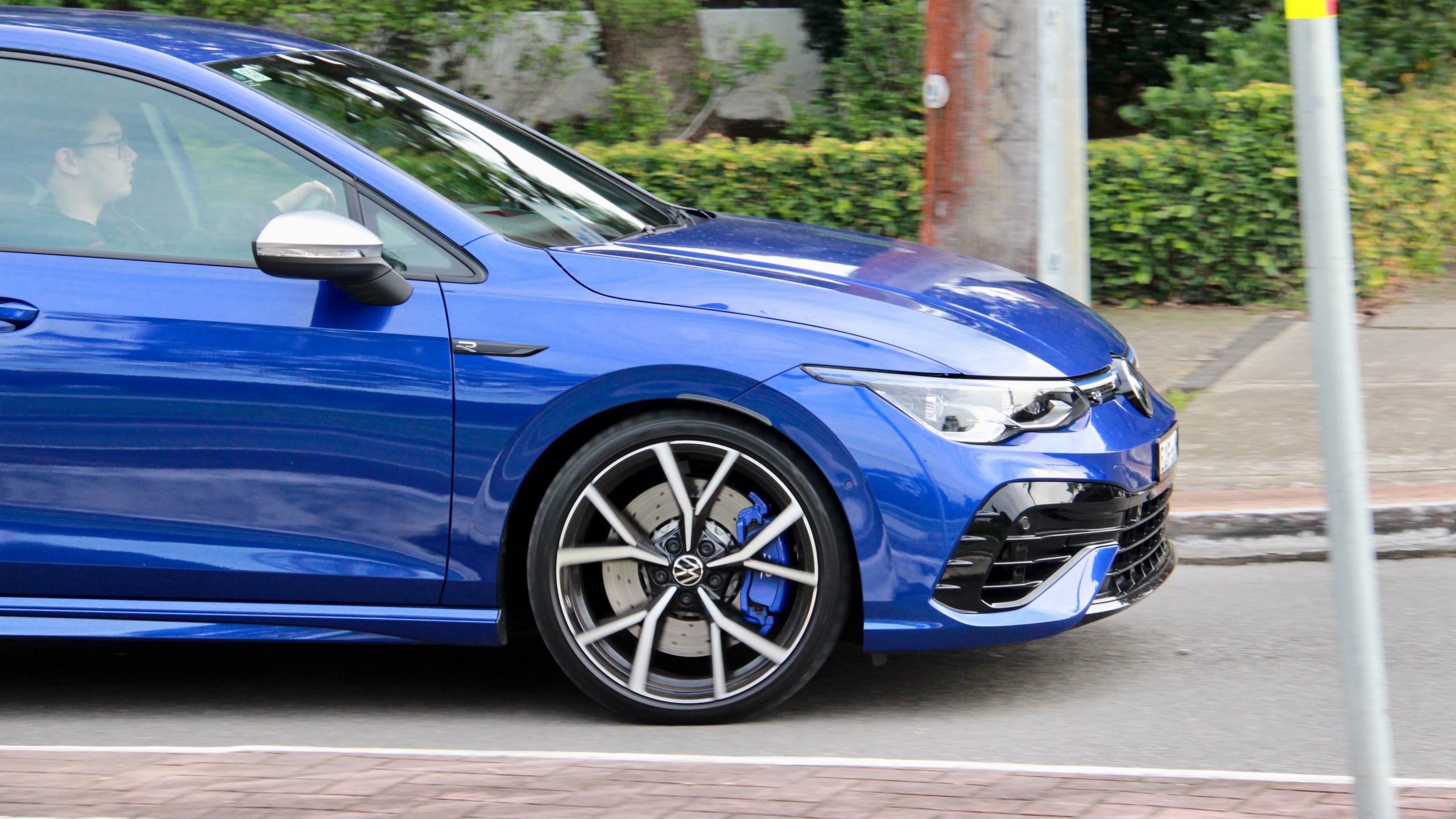
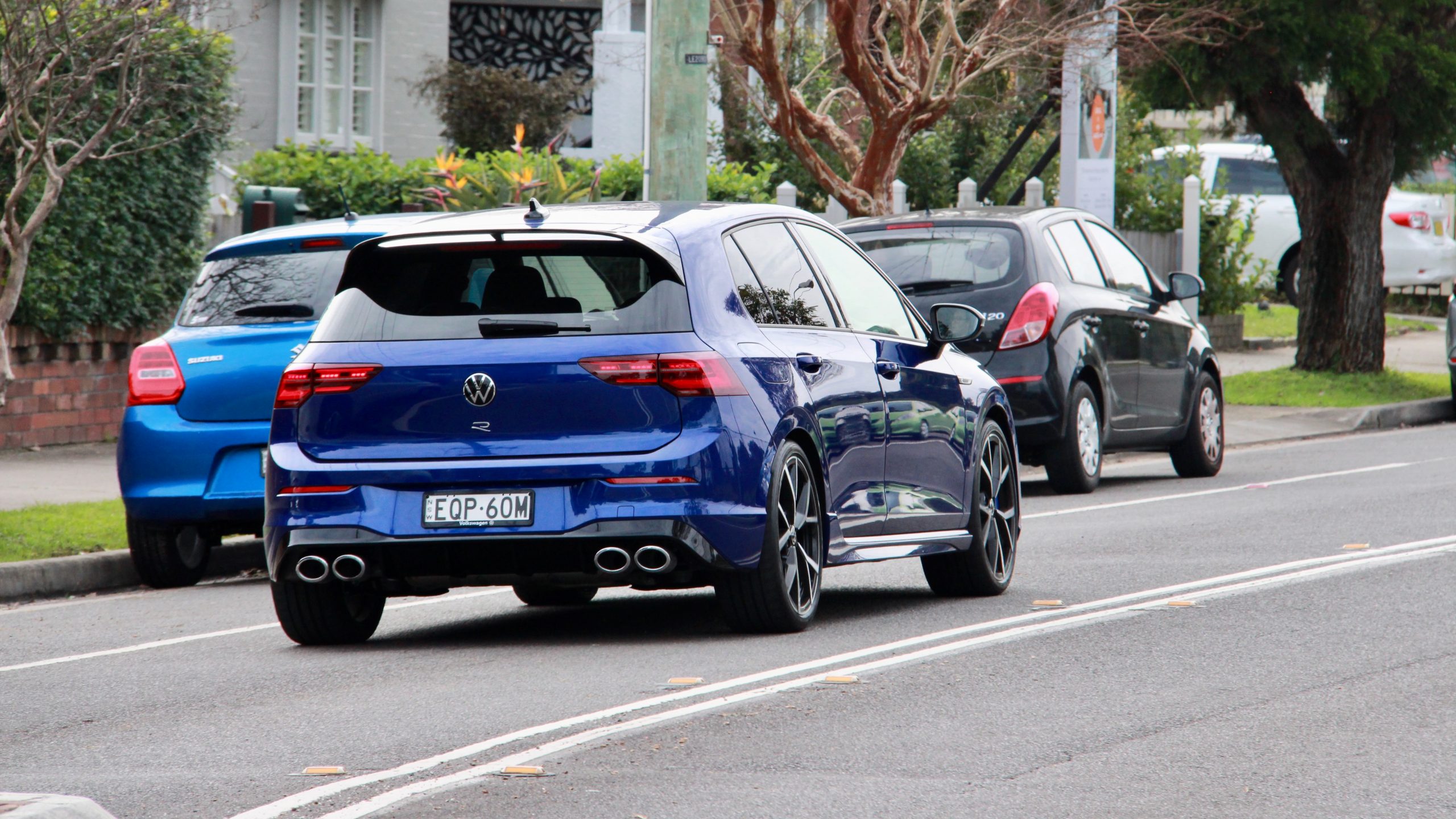
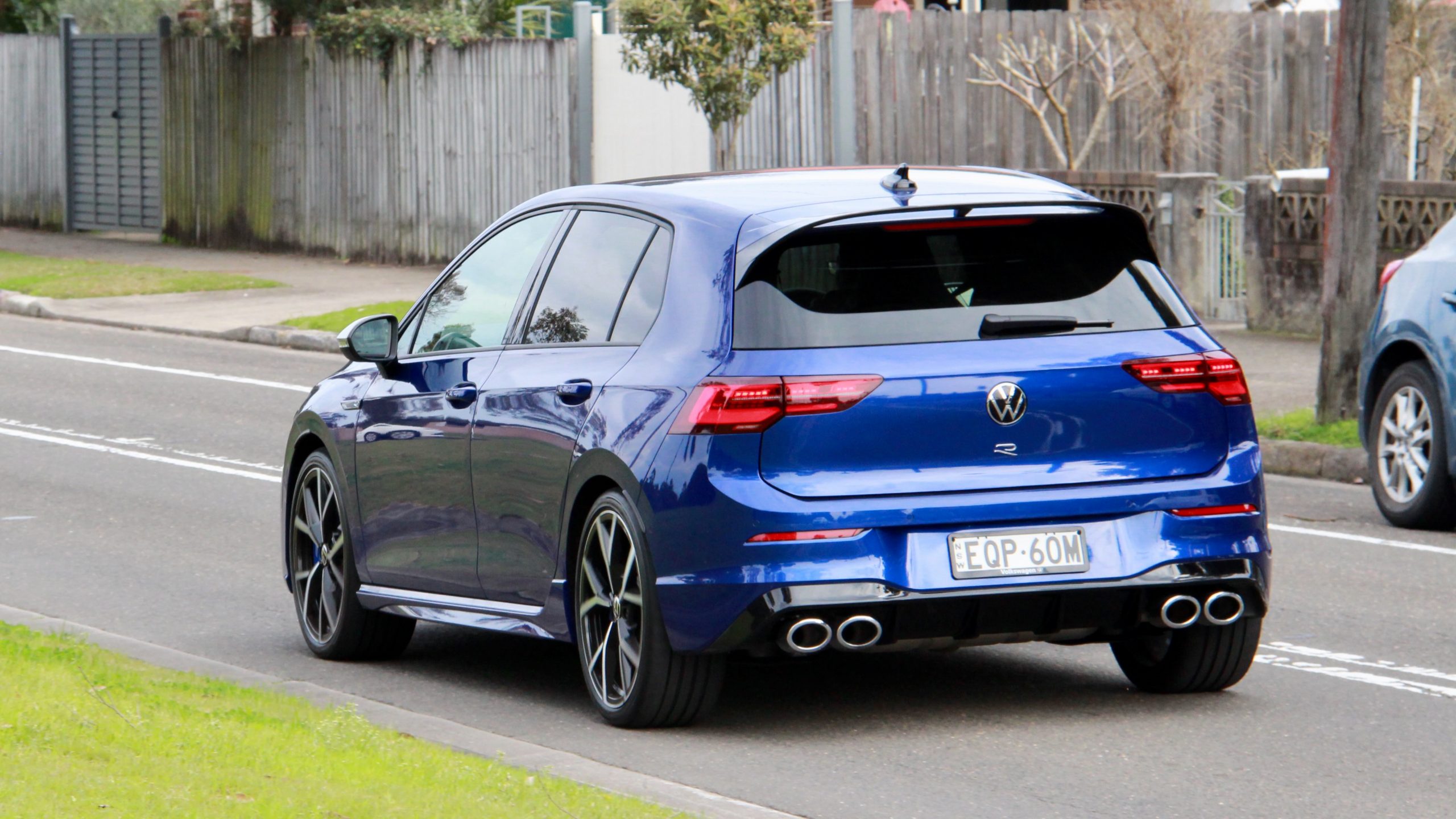
Adding further talent to the Golf R’s arsenal are powerful two-pot brake callipers that clamp onto large 357mm drilled front discs, which stop powerfully and quickly. The steering is perhaps the R’s weaker dynamic point with not all that much in the way of feel – a Megane R.S. makes you feel more part of the action for this very reason – but aside from that, it’s a definite improvement over the Mk7.5 R and one of the quickest hot hatches you can buy currently.
Interior & Practicality: 8/10
As we found in our review of the Golf GTI and the regular Golf, Volkswagen has gone for a minimalist look this time around. As we found again, that’s for both better and for worse – the cabin is more futuristic looking this time around than the conservative Mk7 and Mk7.5, but the lack of proper buttons can be frustrating and while it features way more tech than before, it can be overwhelming to learn.
In addition, the quality inside the Mk8 GTI has definitely been taken down a notch in comparison to the Mk7.5 with limited soft touch materials and even when a surface is soft touch, it’s not textured particularly nicely. The rest of the cabin uses hard, dark materials, which suits the Golf’s German austerity, but superior materials exist in Golf models of the past.
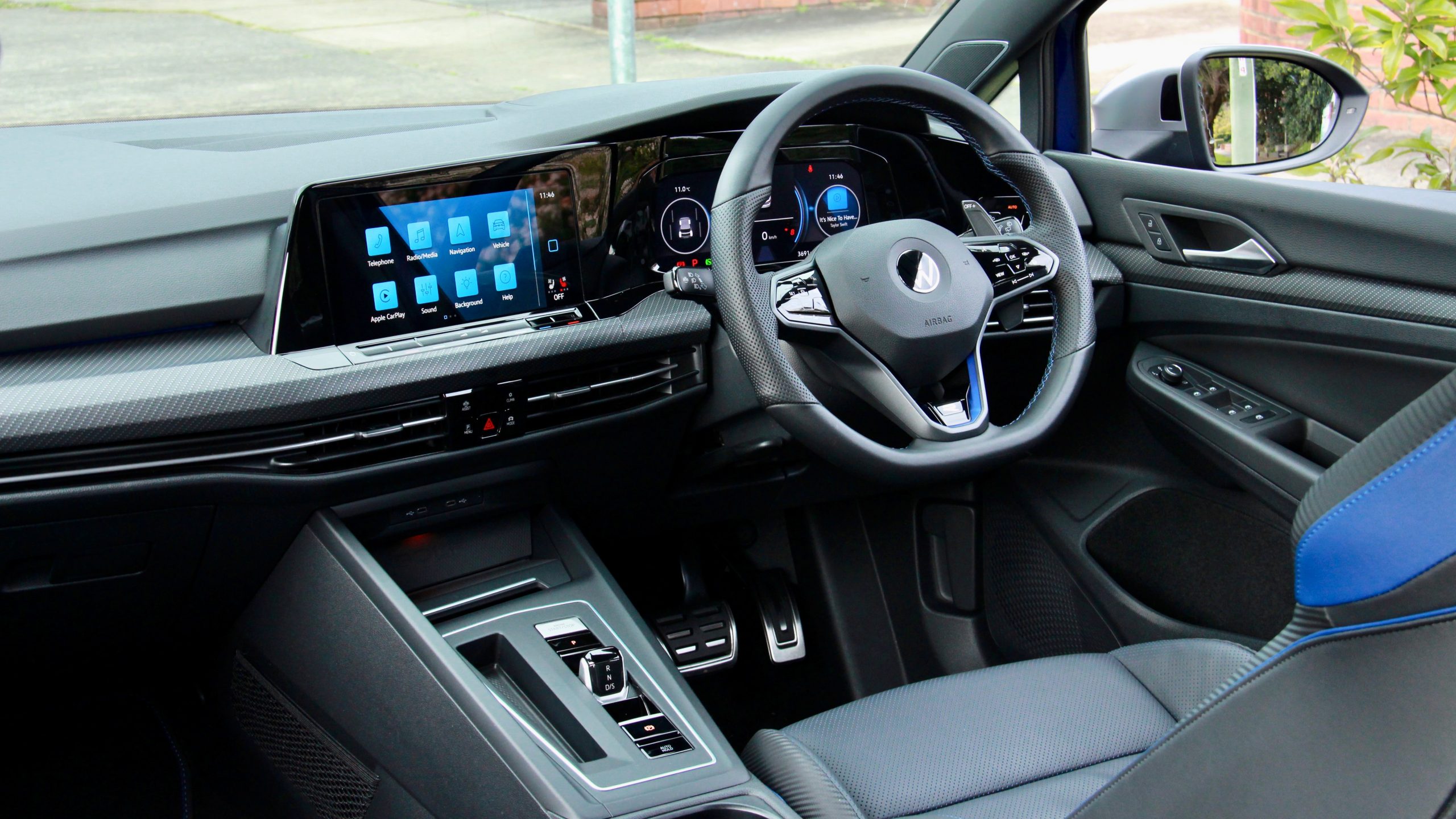
Thankfully, the minimalist cabin design has unlocked more practicality with big flock-lined door bins, a large glovebox, a reasonable centre console box, a big centre console storage area and an oddly-shaped cupholder area that’s worryingly close to the starter button, hand brake and gear selector if liquid were to be spilt. Thankfully, the 30-colour LED ambient lighting adds a nice touch to the cabin.
The R-specific details of the cabin like the Nappa leather-covered sports seats, flat bottomed steering wheel with big paddle shifters and various R badges add more of a sporting touch to the R’s cabin. We particularly like the use of blue upholstery to continue the R theme, though we’d love to see the option of different coloured upholstery (like in BMW’s M cars) to make the cabin feel more bespoke.
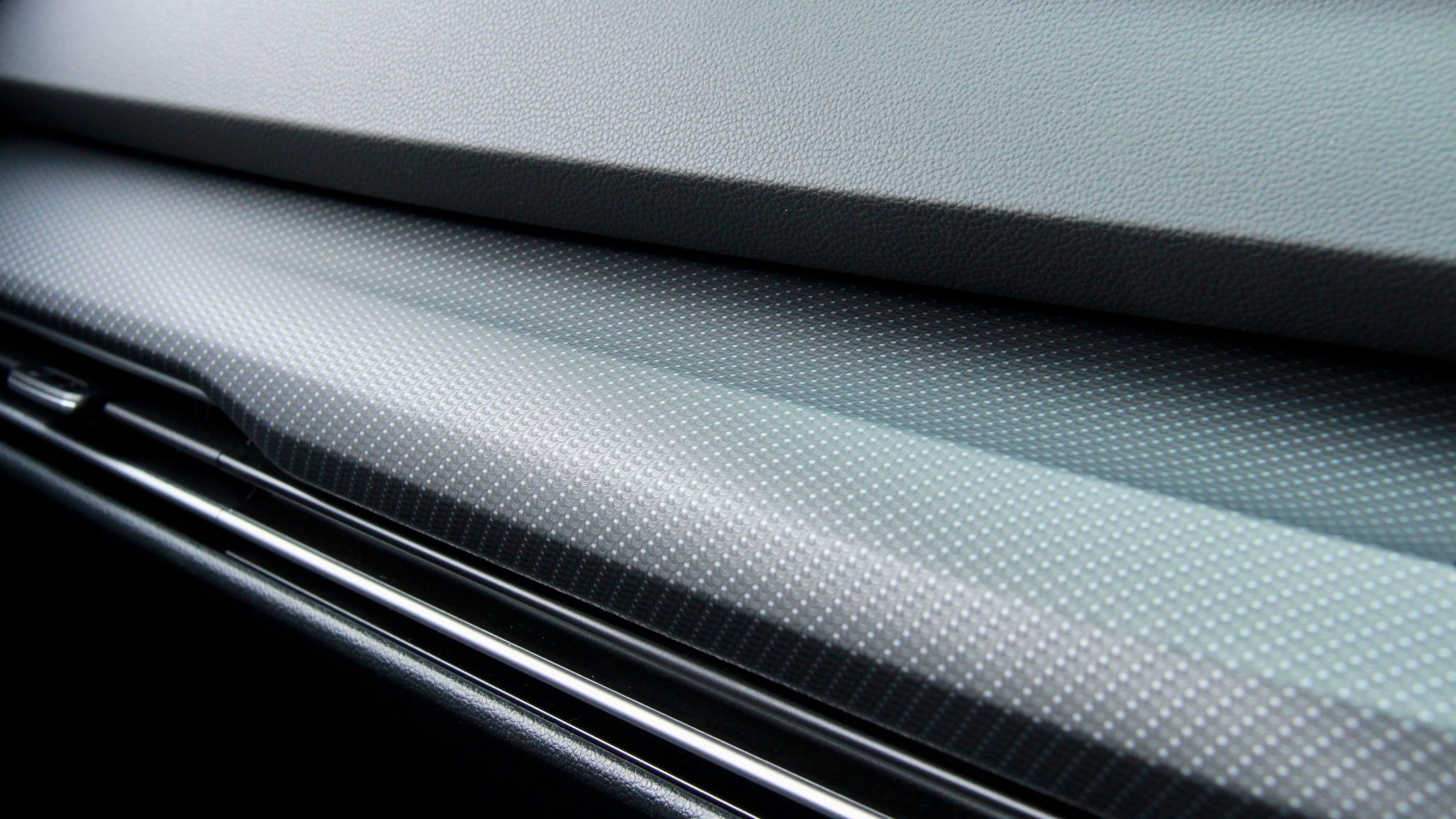
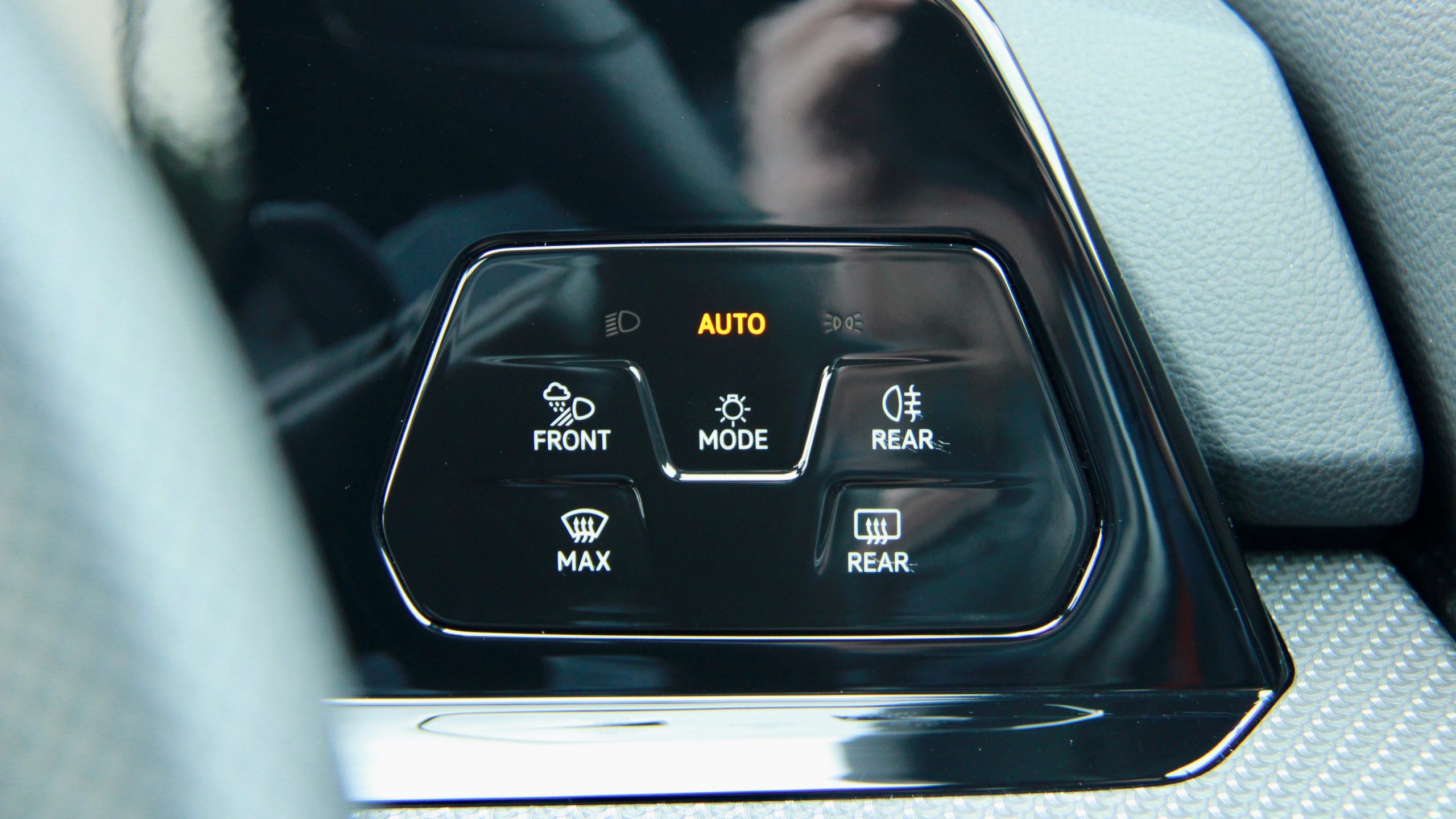
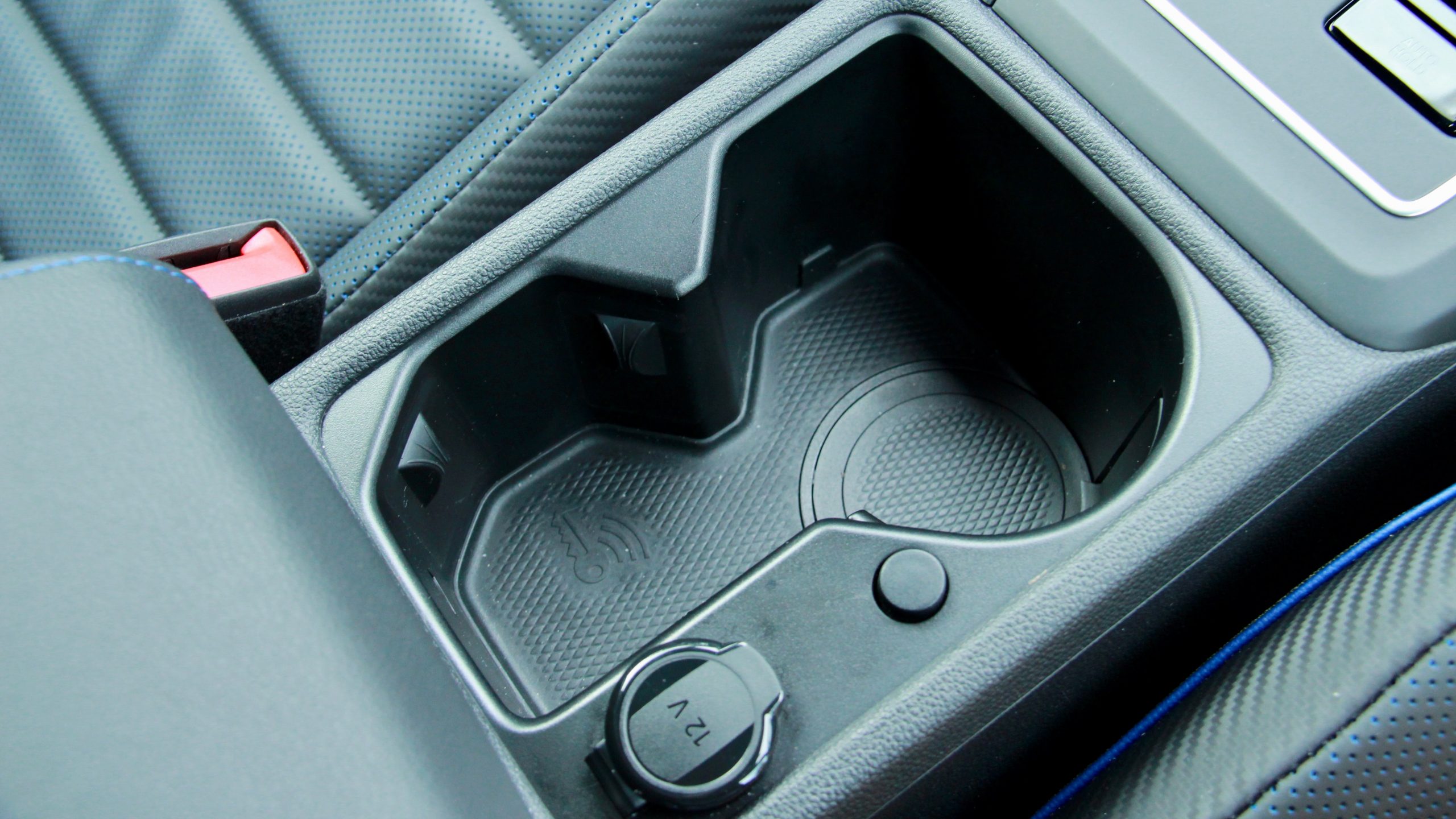
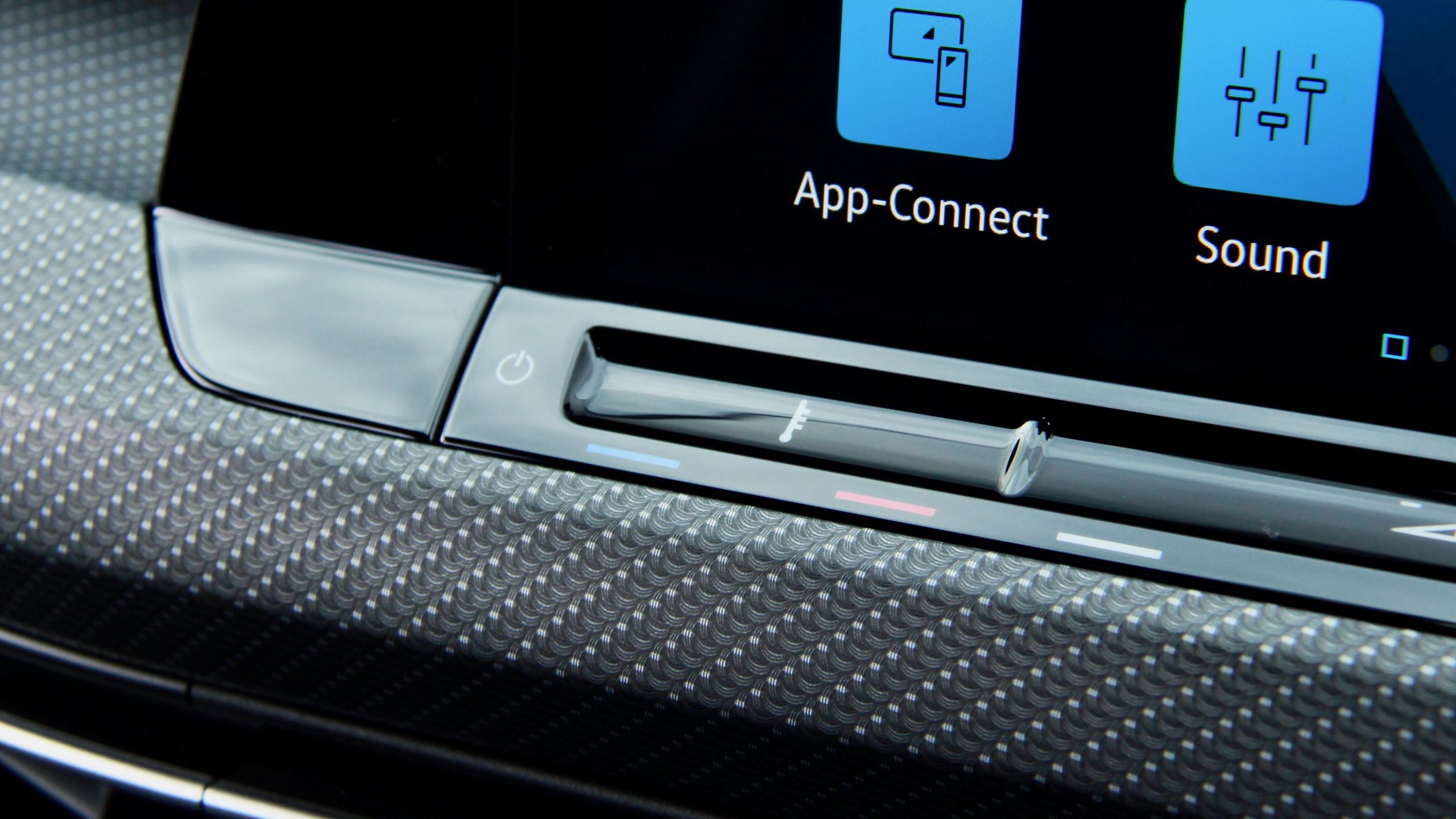
Centre of the cabin is a 10-inch touchscreen that features wireless Apple CarPlay and Android Auto, satellite navigation and digital radio, while a wireless charger and four USB-C ports surround occupants with charging options. The centre screen itself is crisp and quick to react to touch, but the software is frustrating at times as the screen layouts are wrong, while moving from screen to screen can take too many steps. It’s just not intuitive to the driver and can be dangerous – disappointing when the Mk7.5 Golf’s screens were great in comparison as their layout was simpler and the rear camera quality was better.
Thankfully, the Golf remains spacious for a small hatchback. While not quite as roomy as an i30 N, the back seat of the Golf R is totally fine for two six-footers and it’s well featured as well with rear vents, a separate climate zone, big flock-lined door bins, map pockets with dedicated phone slots, two USB-C charging ports, an armrest with cup holders and a ski pass through. We’d like to see heated seats back there, though.
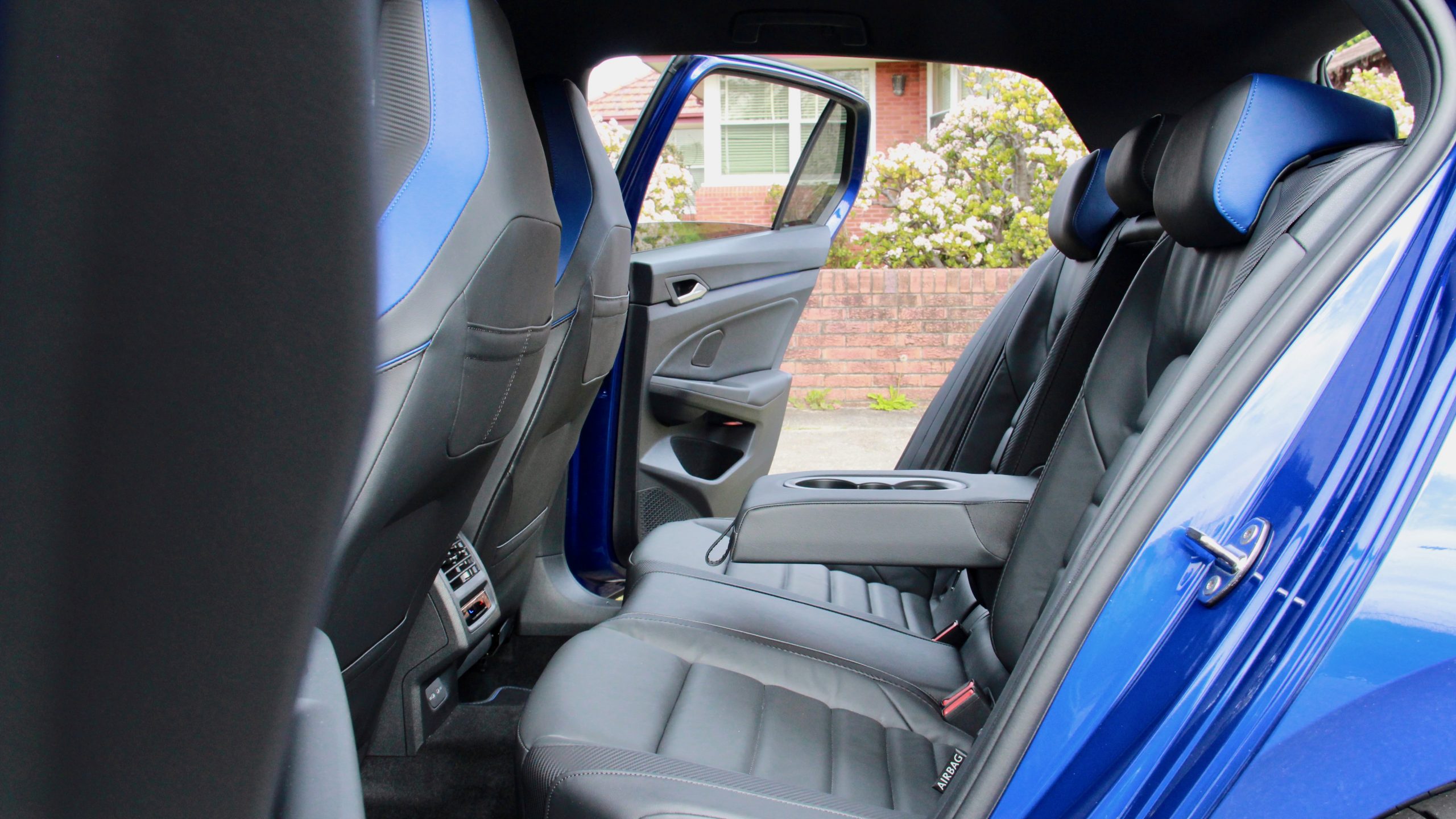
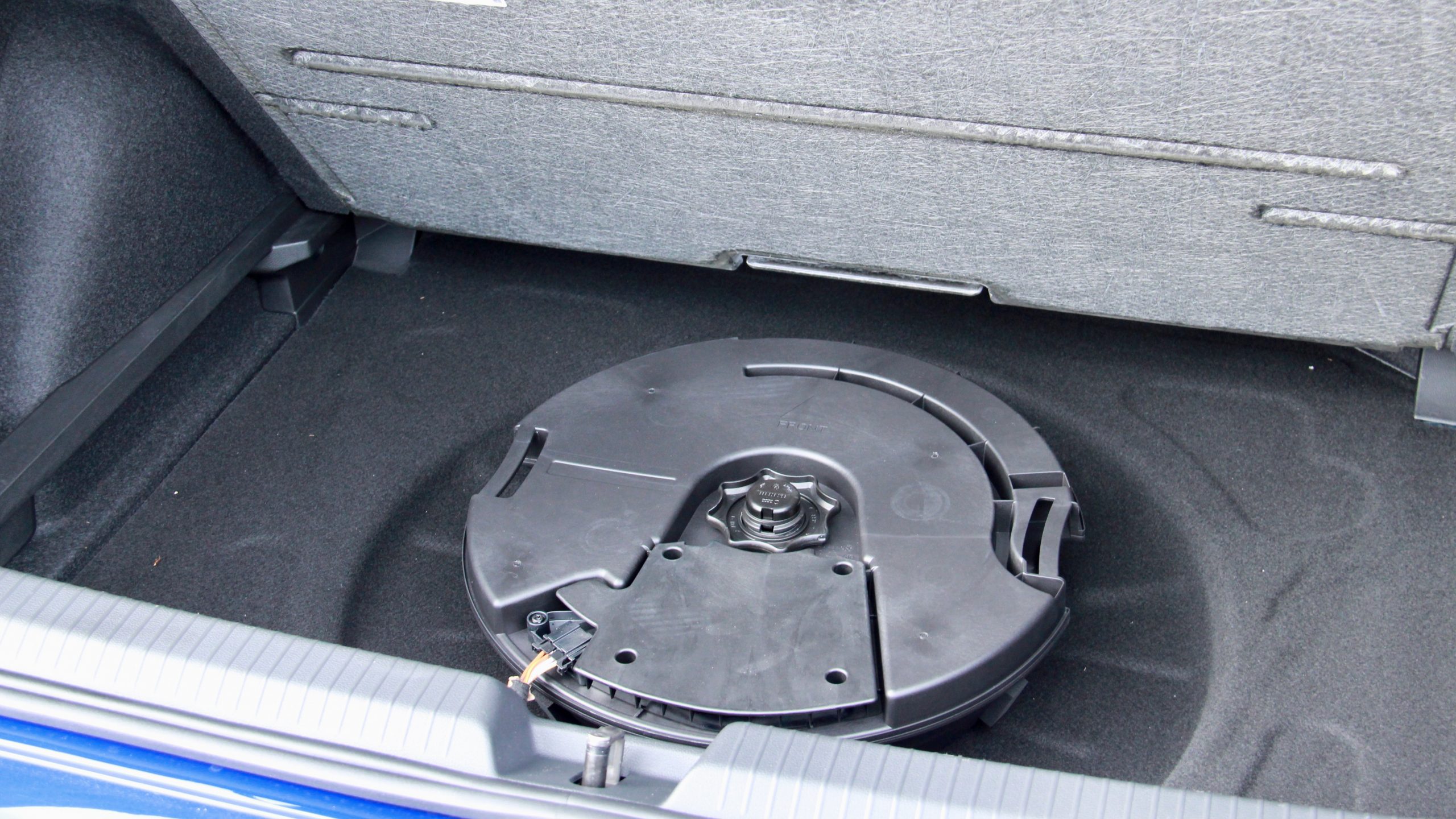
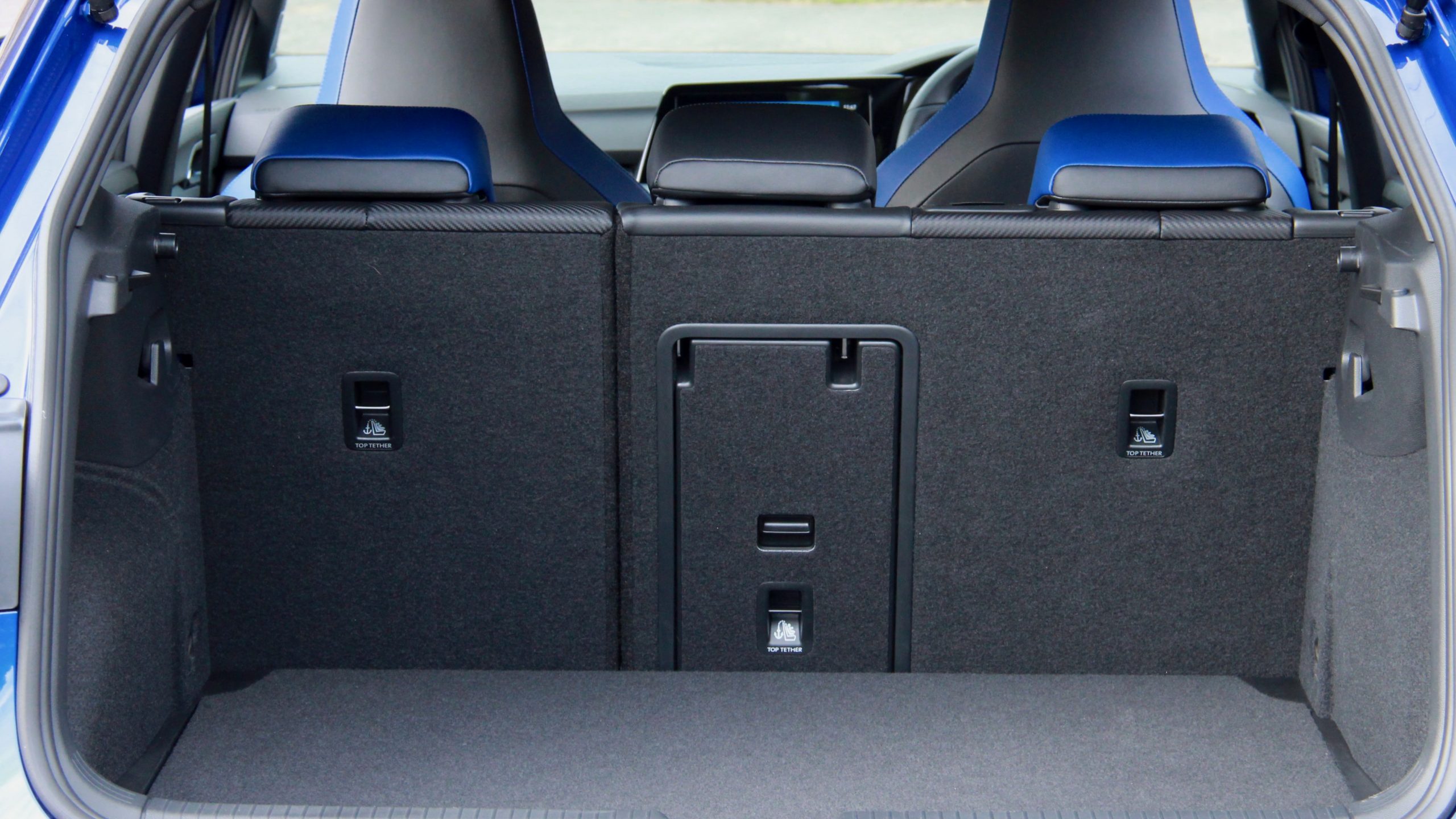
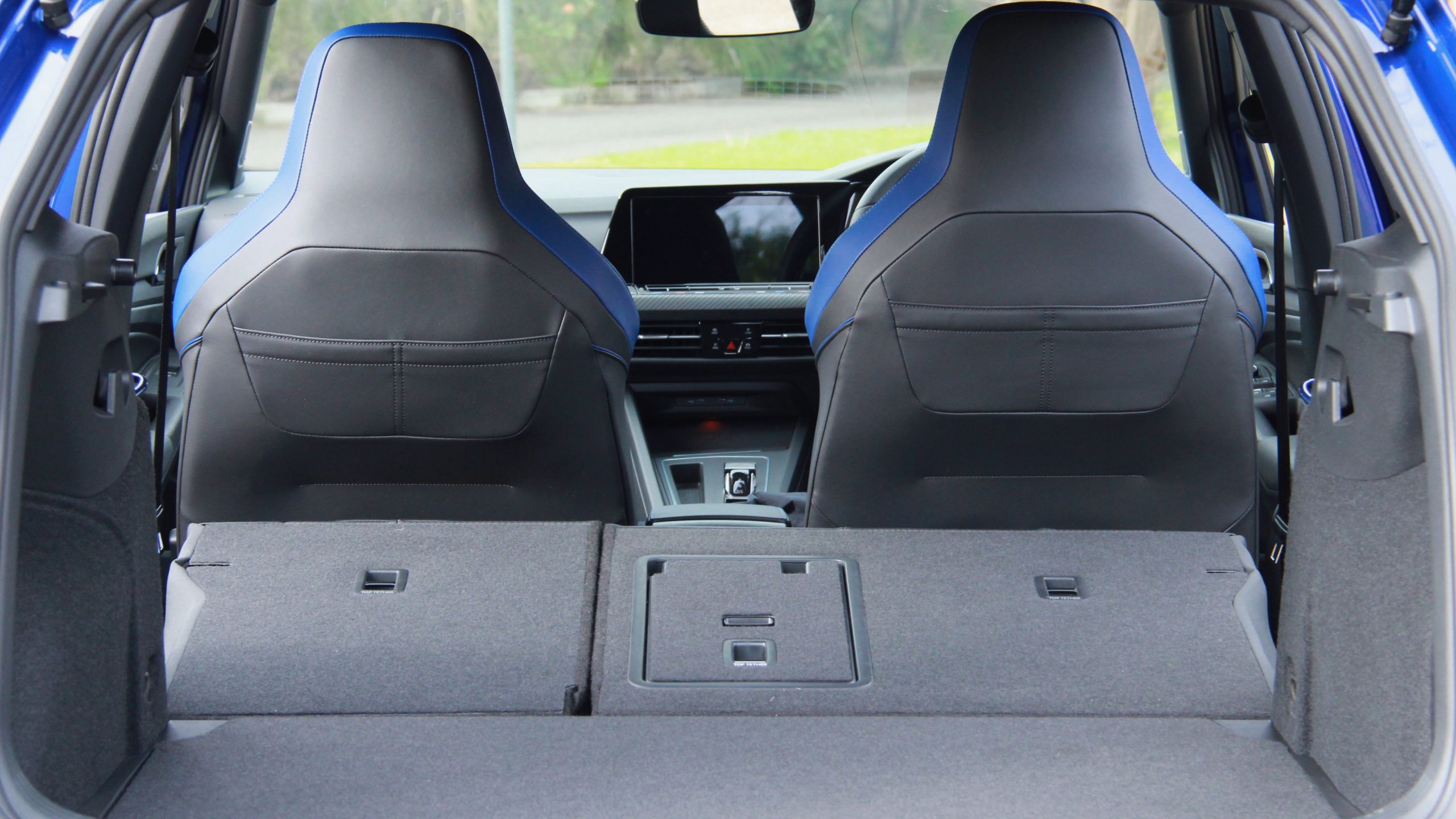
The boot of the Golf R measures 374-litres with the seats up and 1,230L with them folded – 6L/10L respectively less than the Mk7.5 Golf – the i30’s measures 381L and the Megane’s is 434L, for reference. The boot is well featured with hooks and side storage. Underneath the boot floor is a subwoofer – there’s no spare wheel or a dual-layer boot floor, unfortunately.
Service & Warranty: 6/10
As with other Volkswagen products, the 2022 Volkswagen Golf R comes with a five-year/unlimited km warranty with 12 months of roadside assistance. Service intervals are once yearly/every 12 months and five years/75,000km of servicing costs an expensive $3,813 ($762 per service) while choosing a pre-paid service plan at the time of purchase for the same duration costs $3,000 ($600 per service).
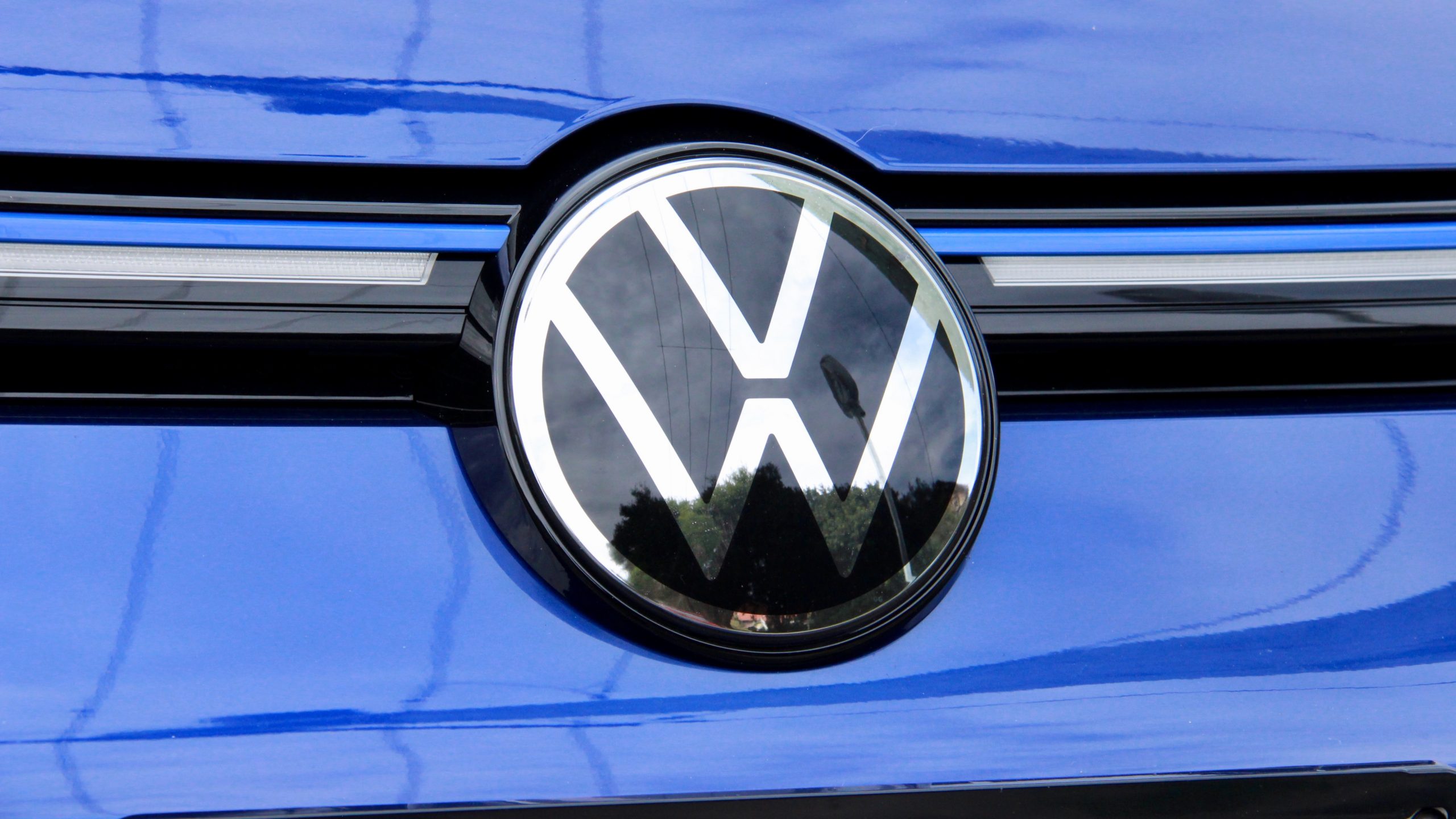
Most rivals offer a similar warranty – five years with unlimited mileage – except for BMW, which is a lacklustre three-year offering, though Audi features a full five year term for roadside assistance. A five-year service pack on a – mechanically identical to the Golf R – Audi S3, costs $2,580 ($516 per service), while the BMW M135i costs $1,700 ($340 per service) for a five-year/80,000km service pack. The Renault Megane R.S. has longer 20,000km service intervals, so over five years/100,000km, it costs a still expensive $3,493 ($699 per service) to service.
The 2022 Volkswagen Golf R DiscoverAuto Rating: 8.1/10
After testing the MK8 generation of the Volkswagen Golf GTI, we were slightly worried at what the R would turn out like because, while it was slightly more dynamic and more tech-filled than the previous model, the driving experience was overwhelmingly tainted by a sub-standard electronic interface and obvious cost cutting in a way that we’re not used to from Volkswagen. But thankfully, and unlike the previous generation Golf, the R shines above the GTI for a few reasons.
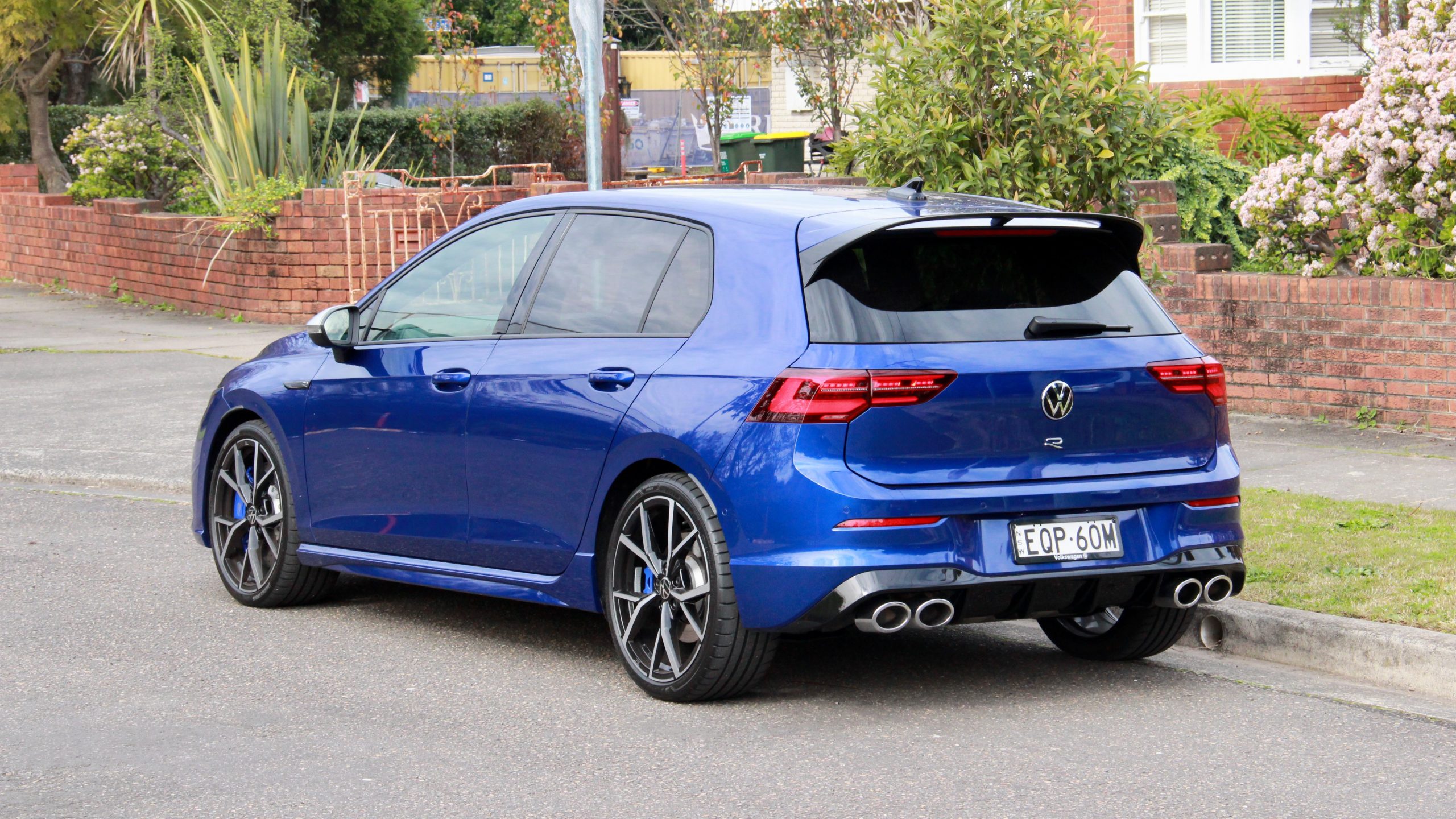
The first of which is the performance – the R pumps out 55kW more power than the GTI, but in reality, it feels even faster than that. It’s also more dynamic thanks to a stronger focus on the driving experience from Volkswagen, as well as a trick torque vectoring rear diff. The final cherry on the cake for us is that although it’s expensive to buy, it’s actually not much more money than an equivalent GTI. Against its premium competitors, it’s well priced. As before, the Golf R is a strong all-rounder. But this time around, it’s also stronger than ever before in almost every area and that’s progress we weren’t expecting.
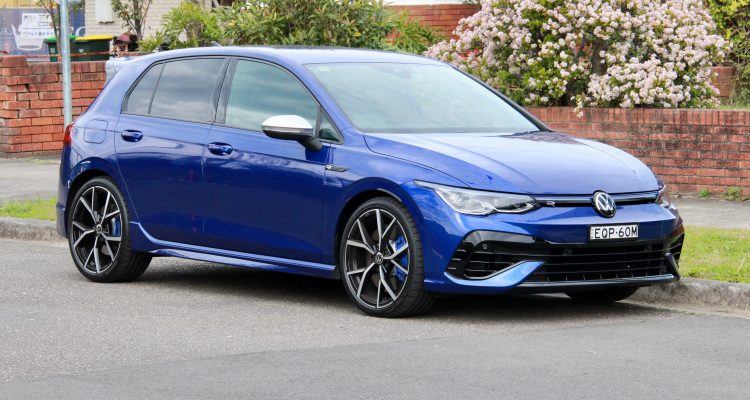
Leave a Reply